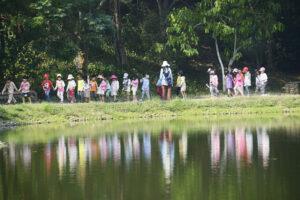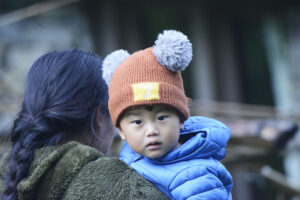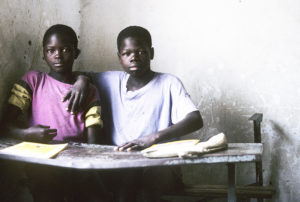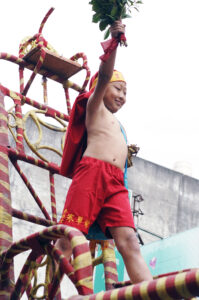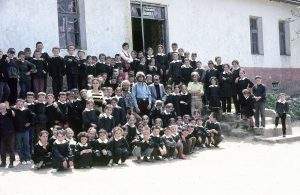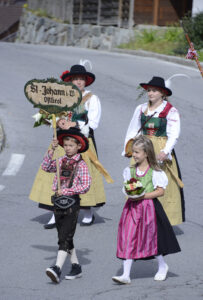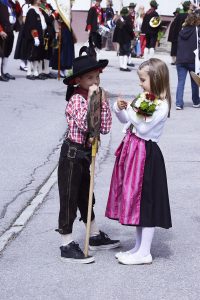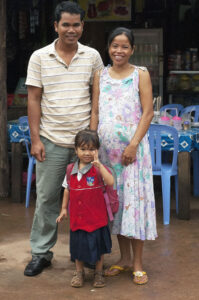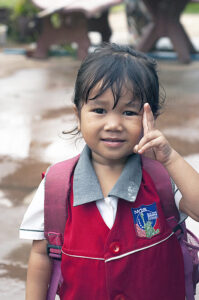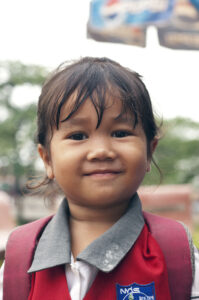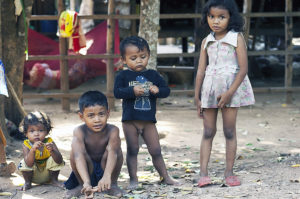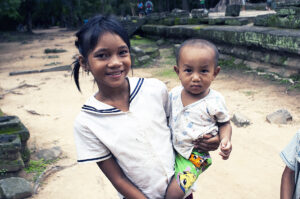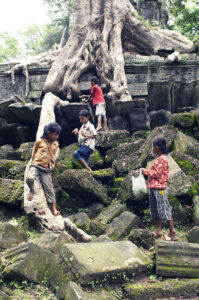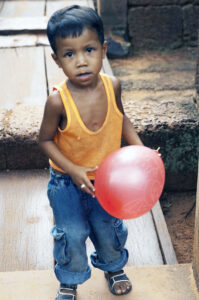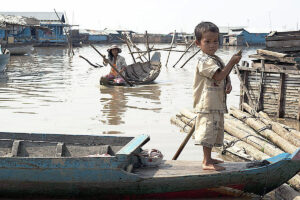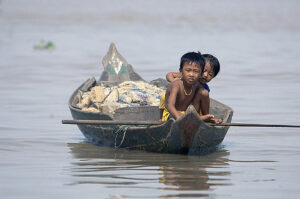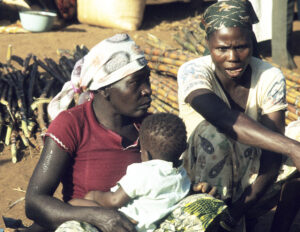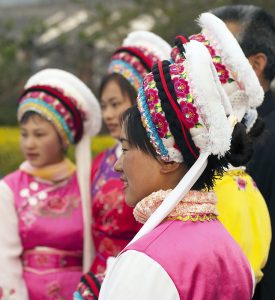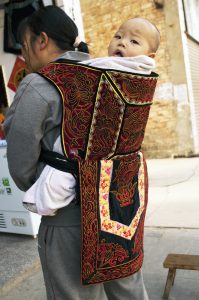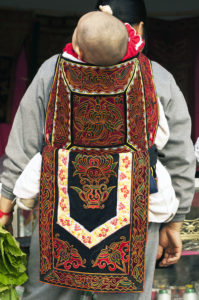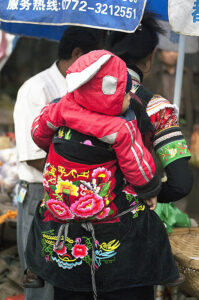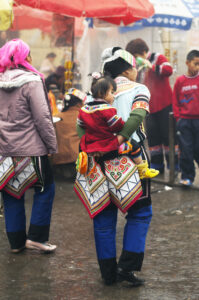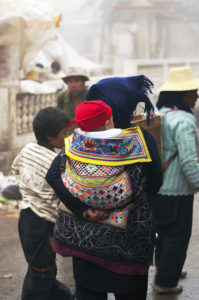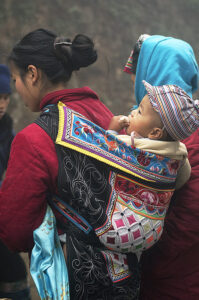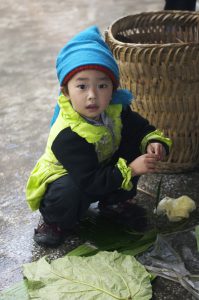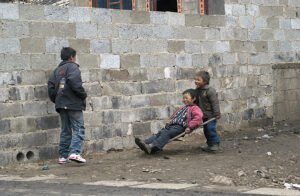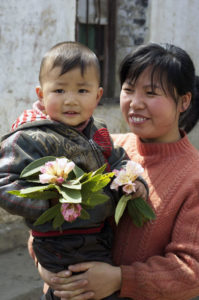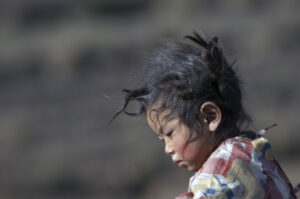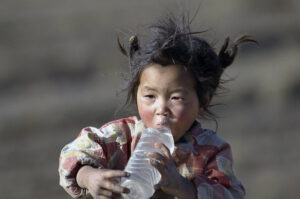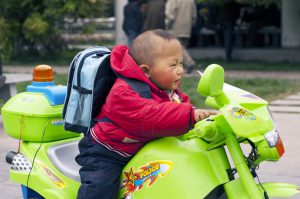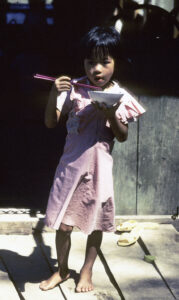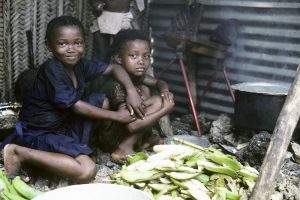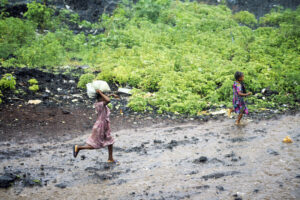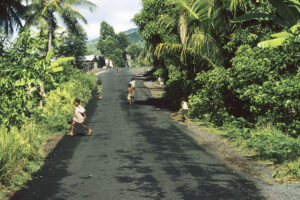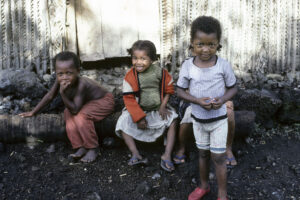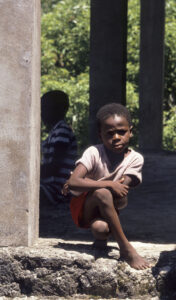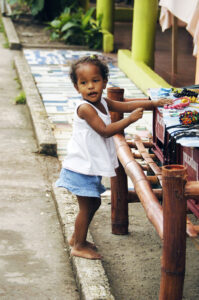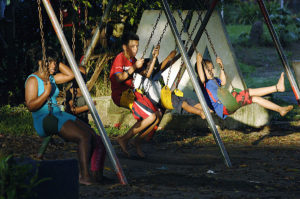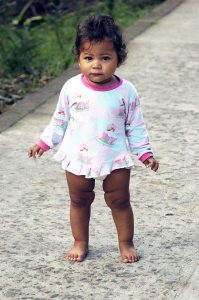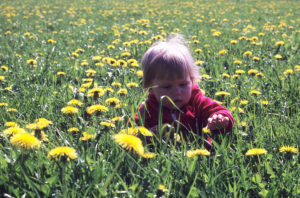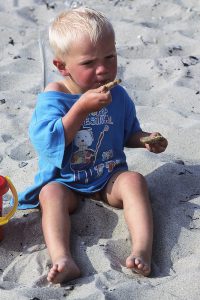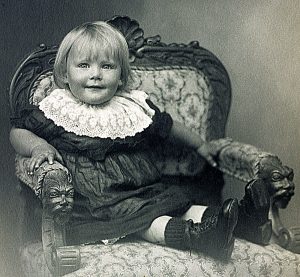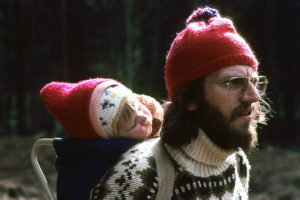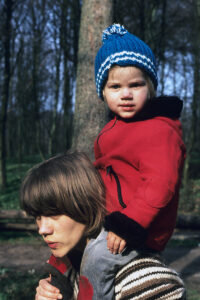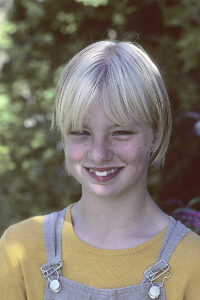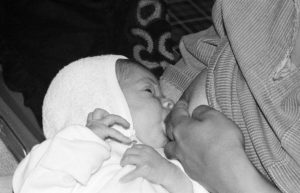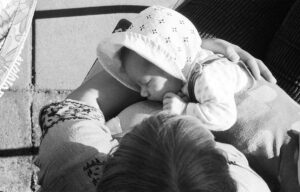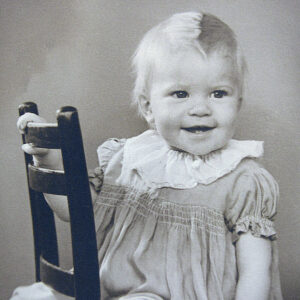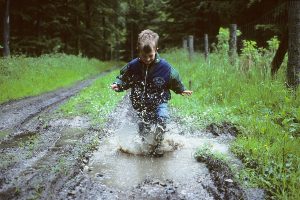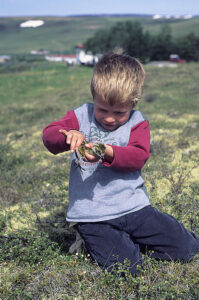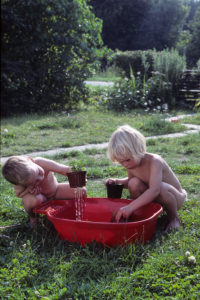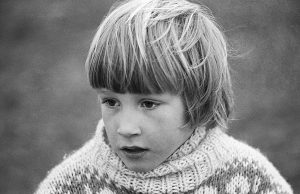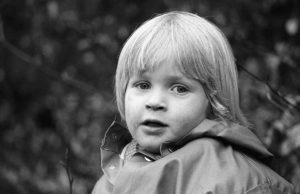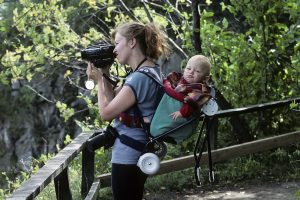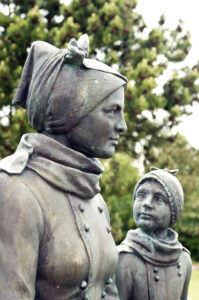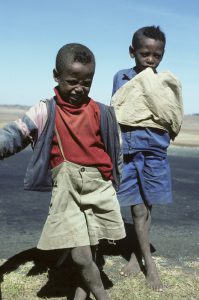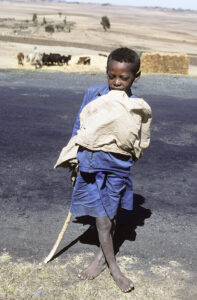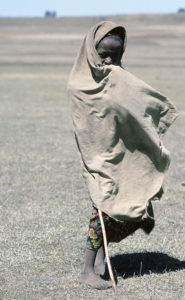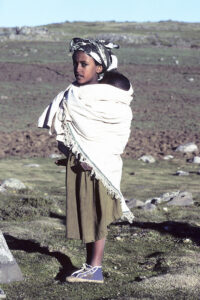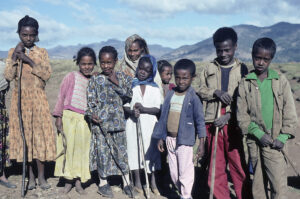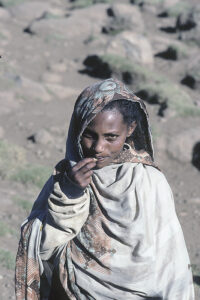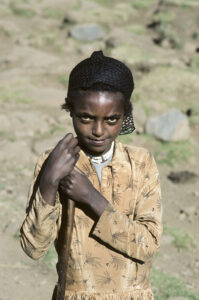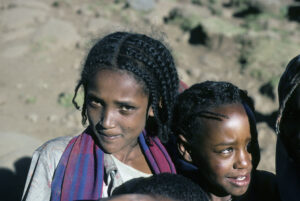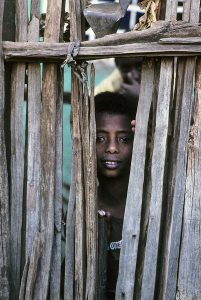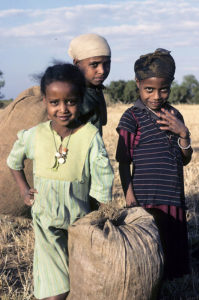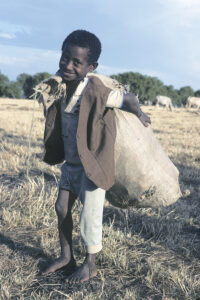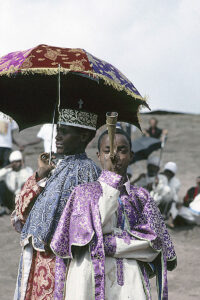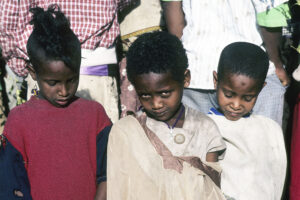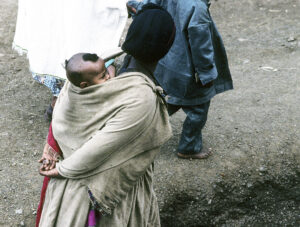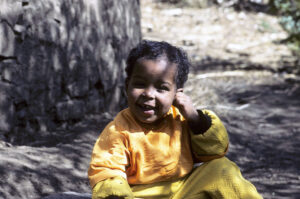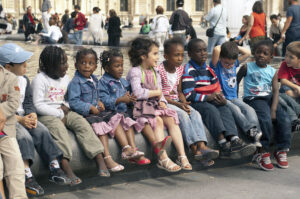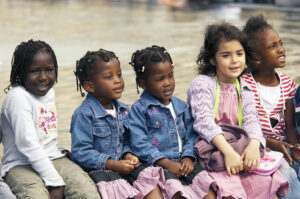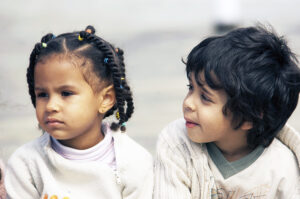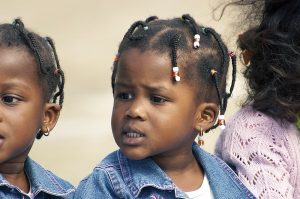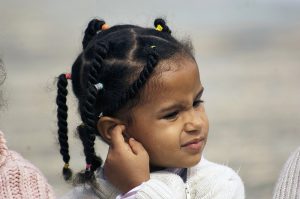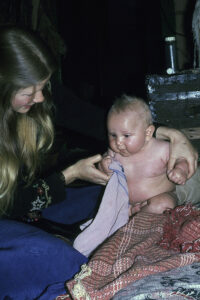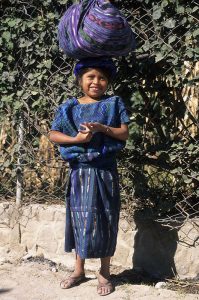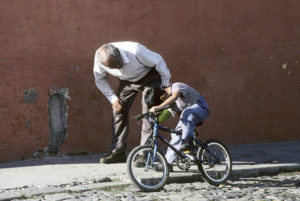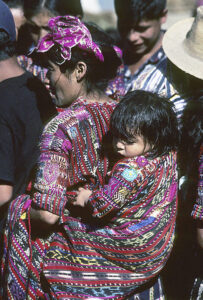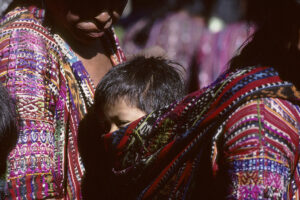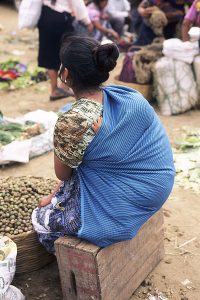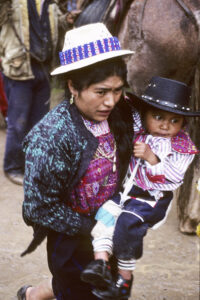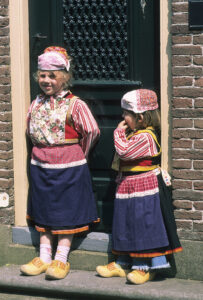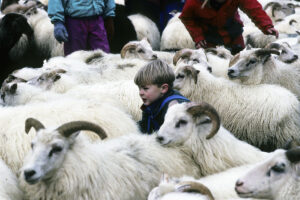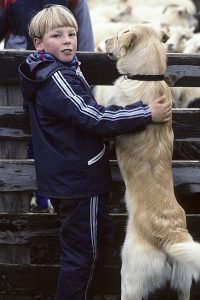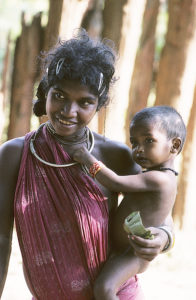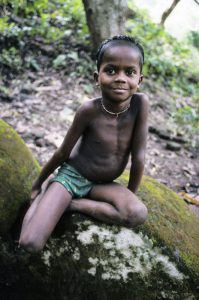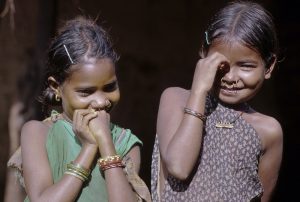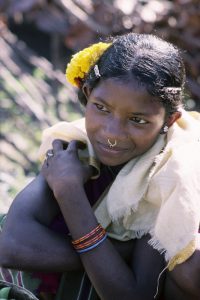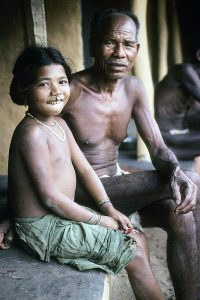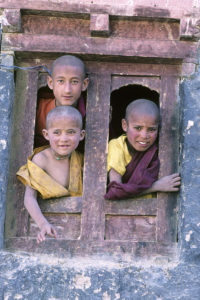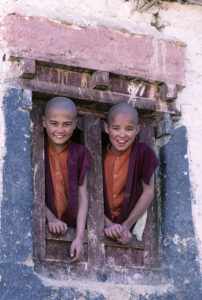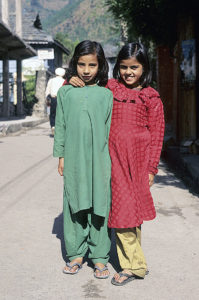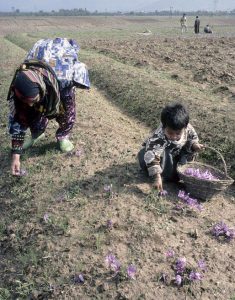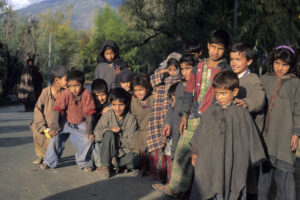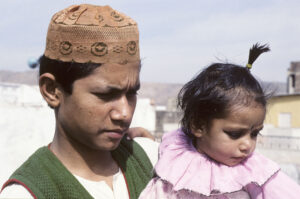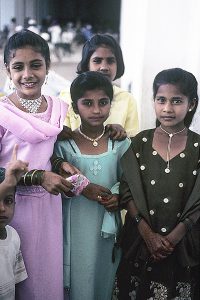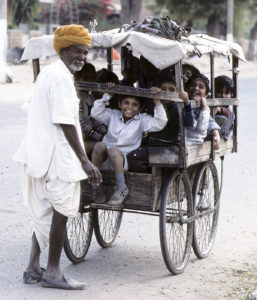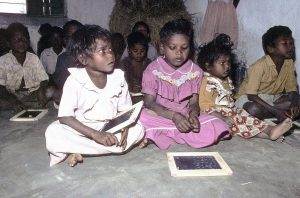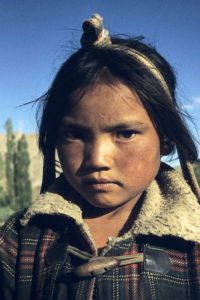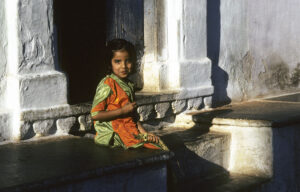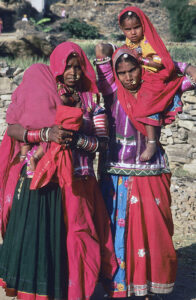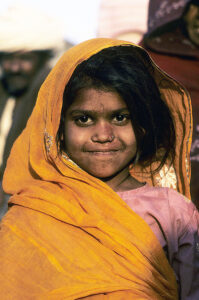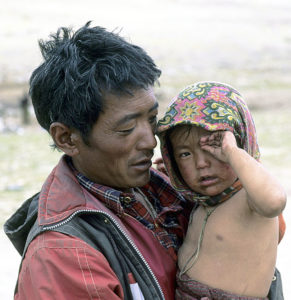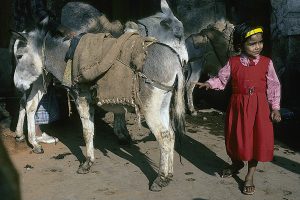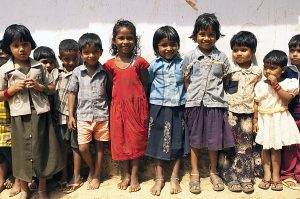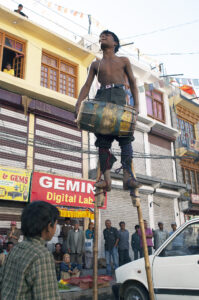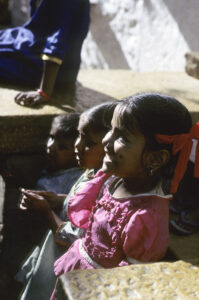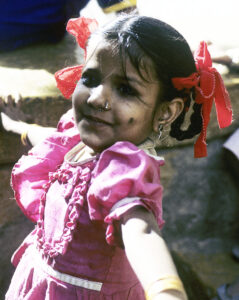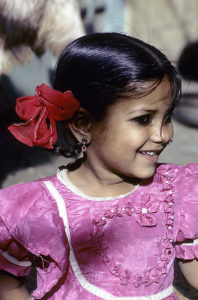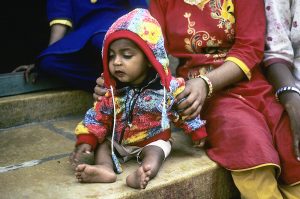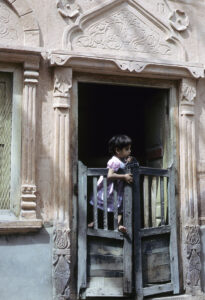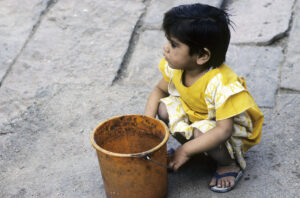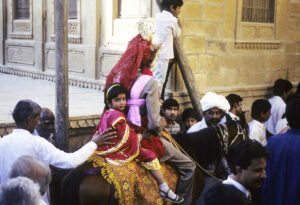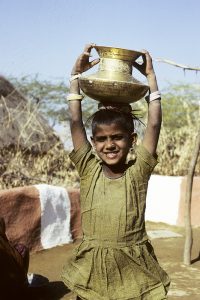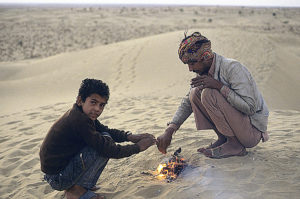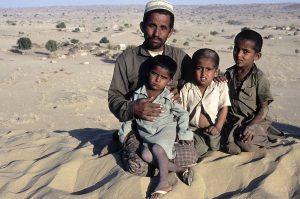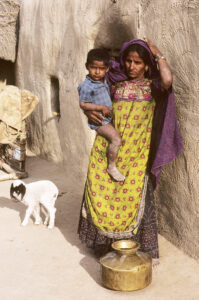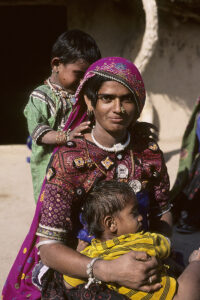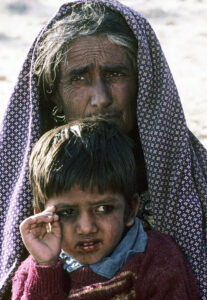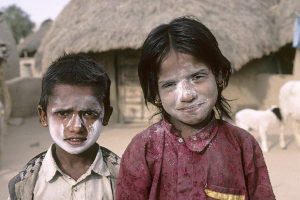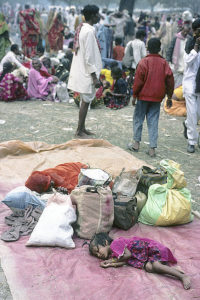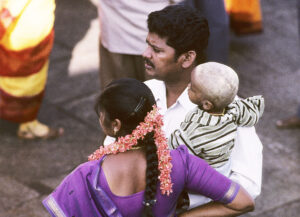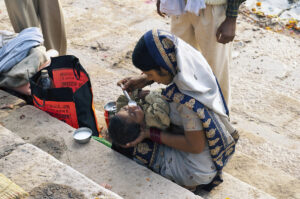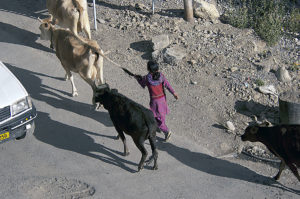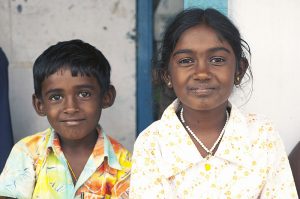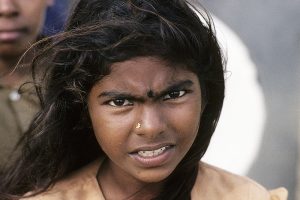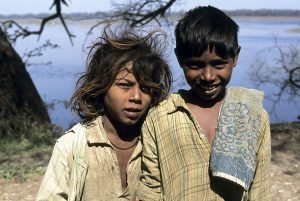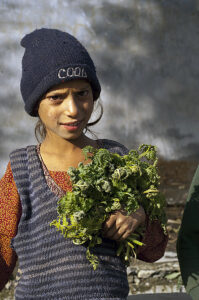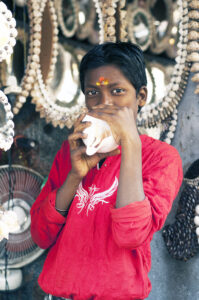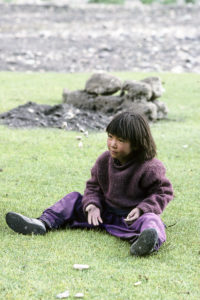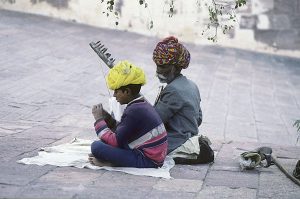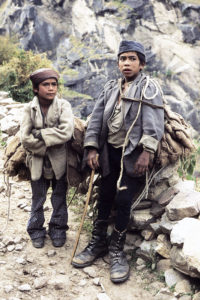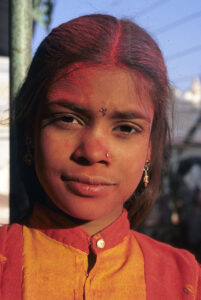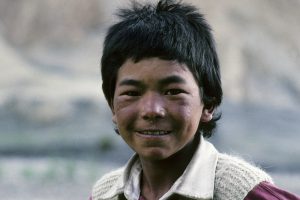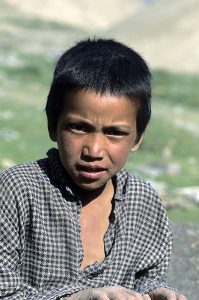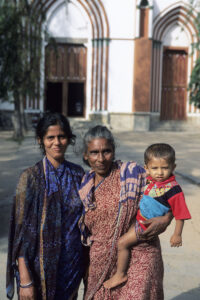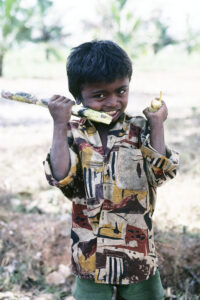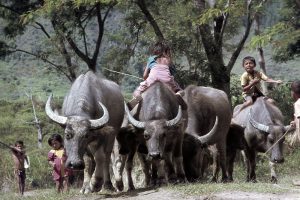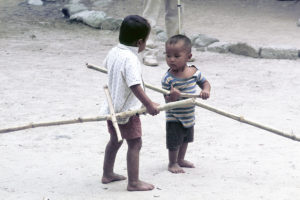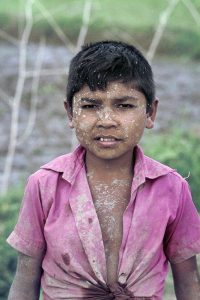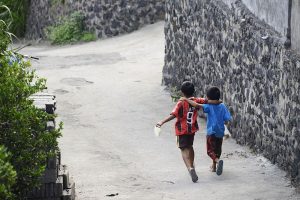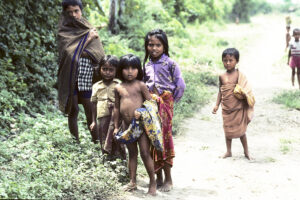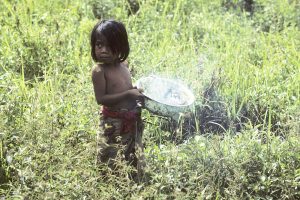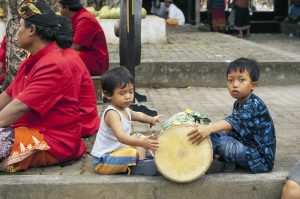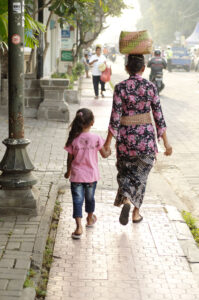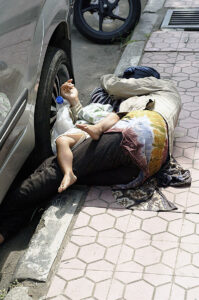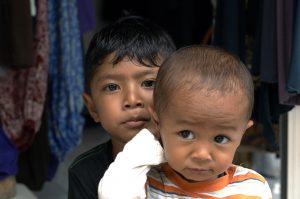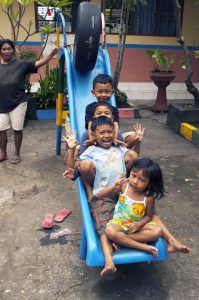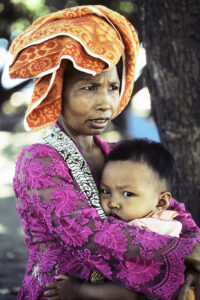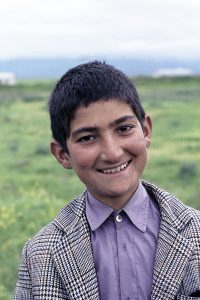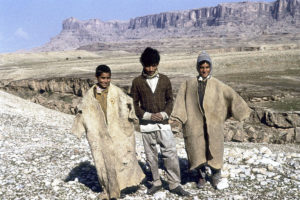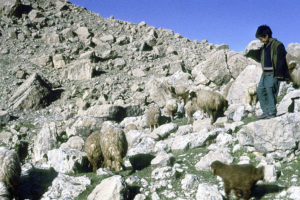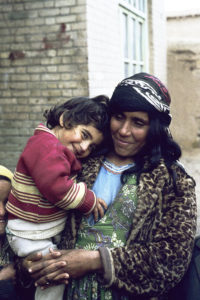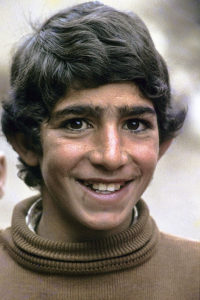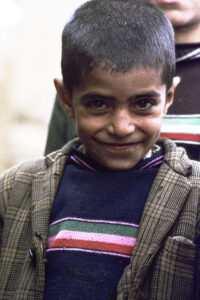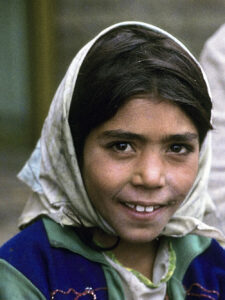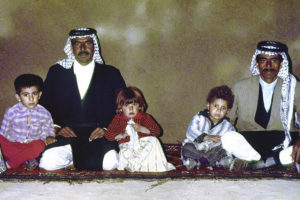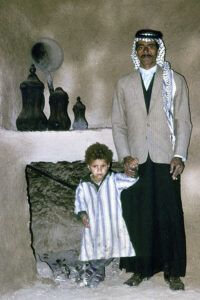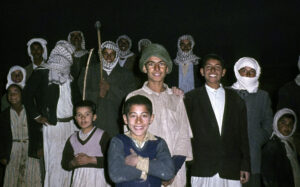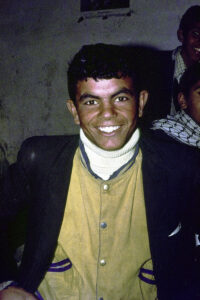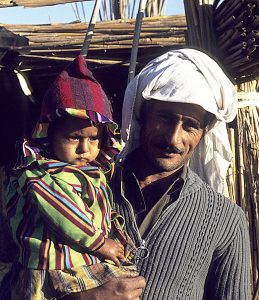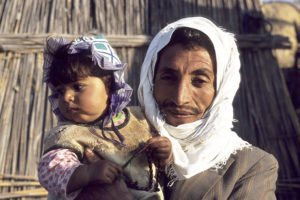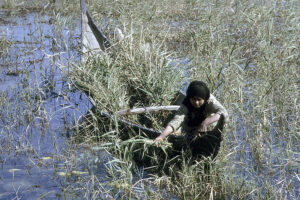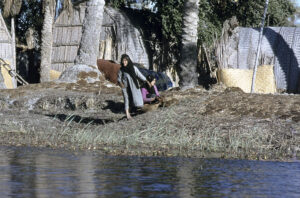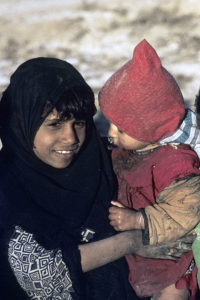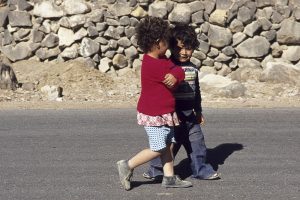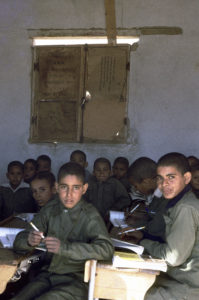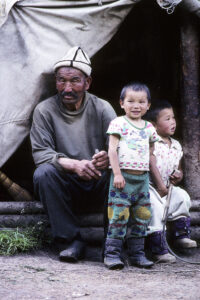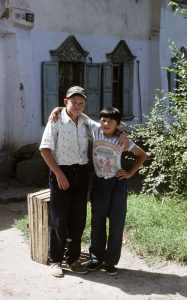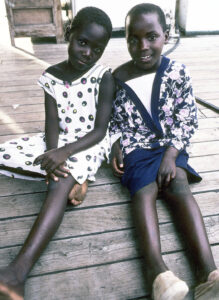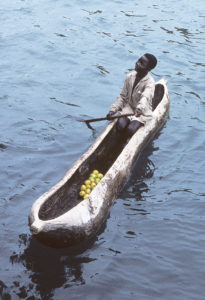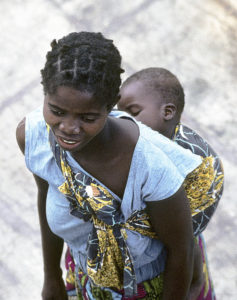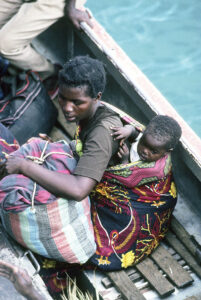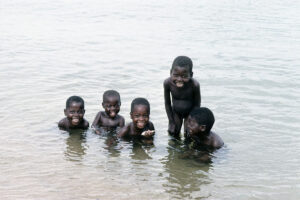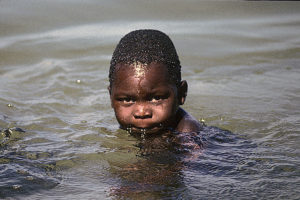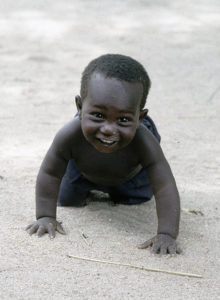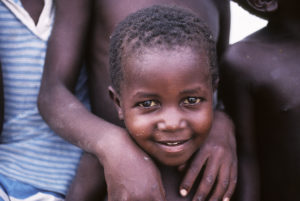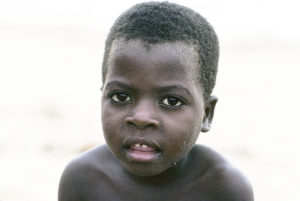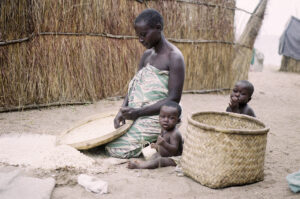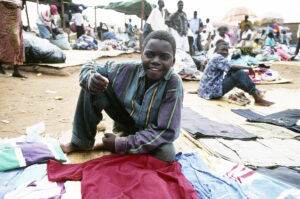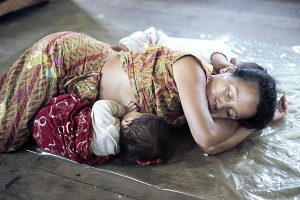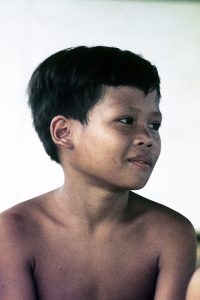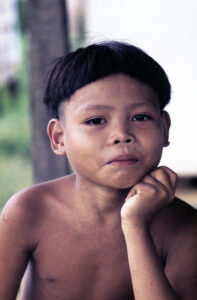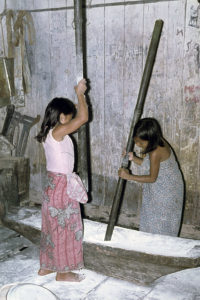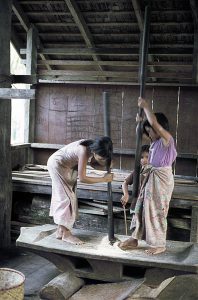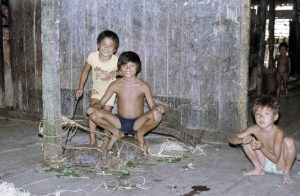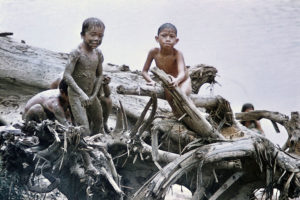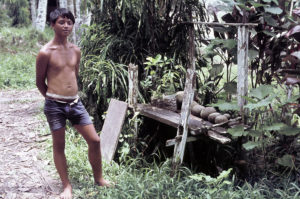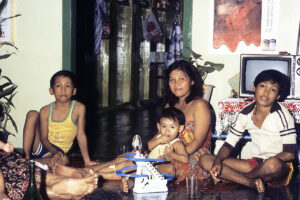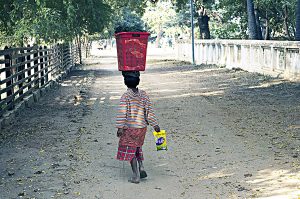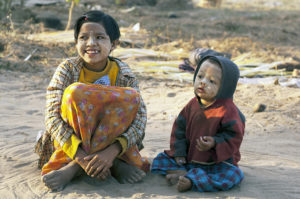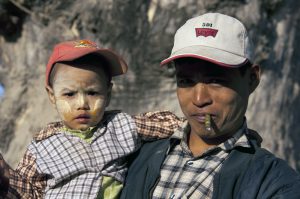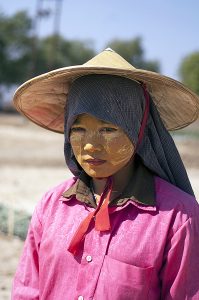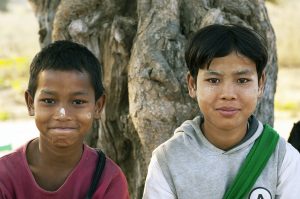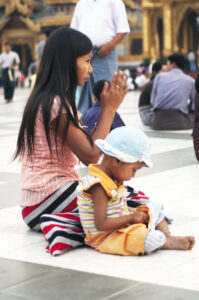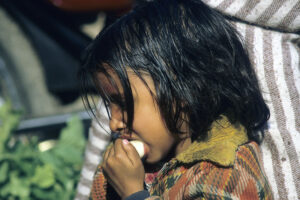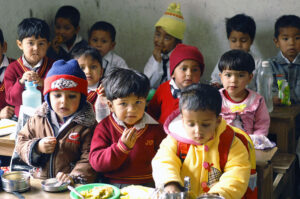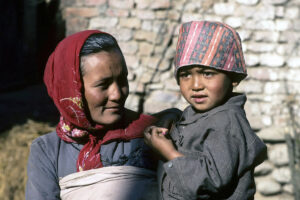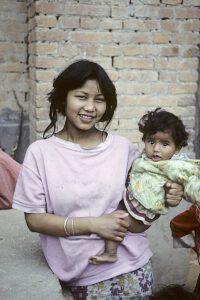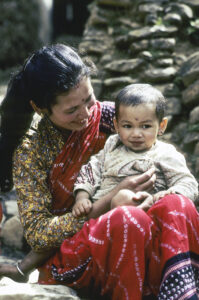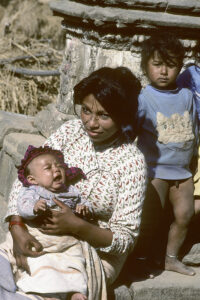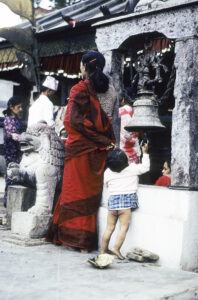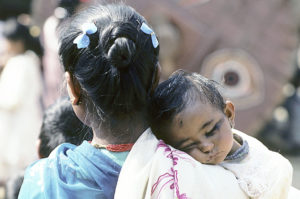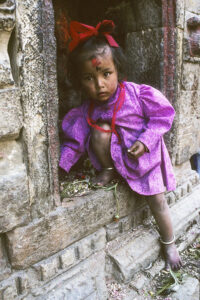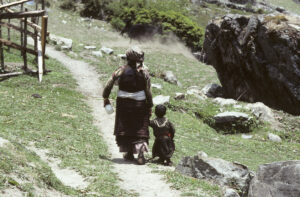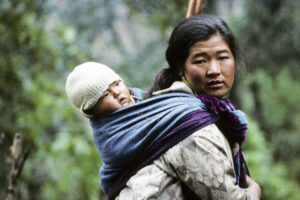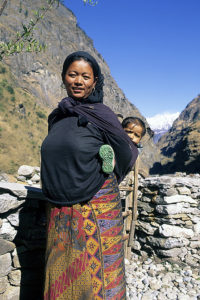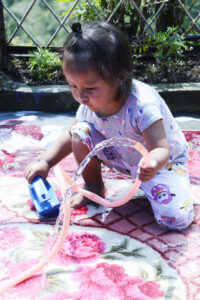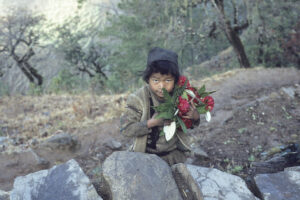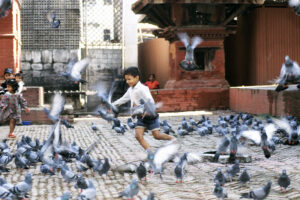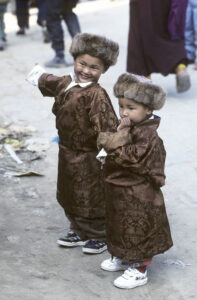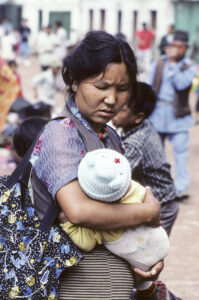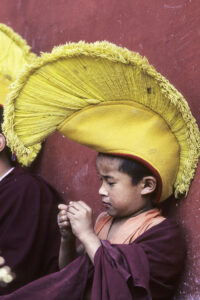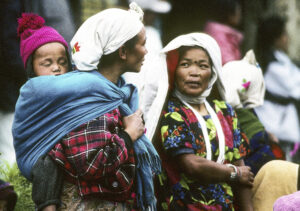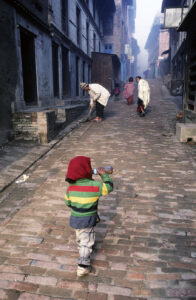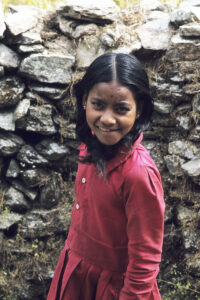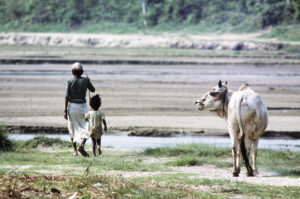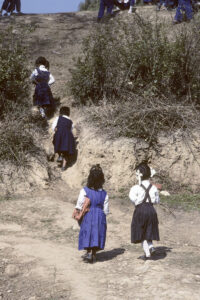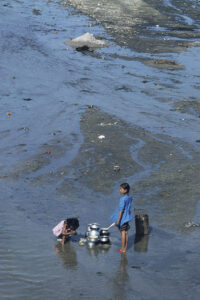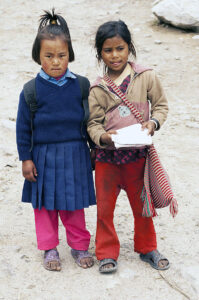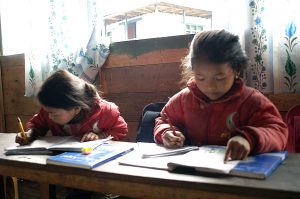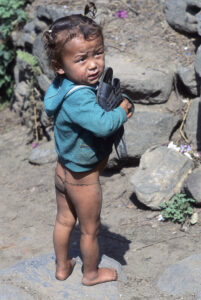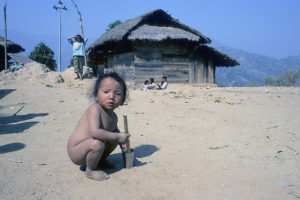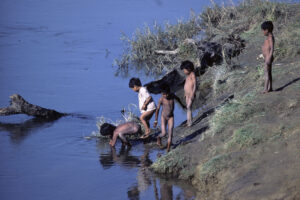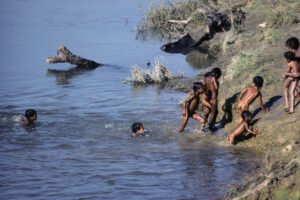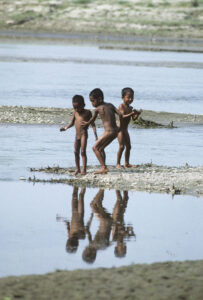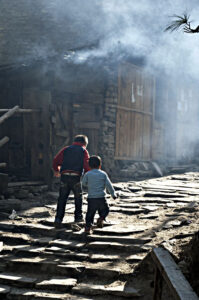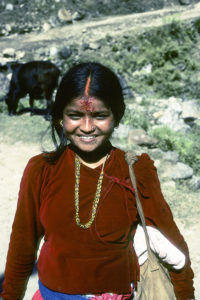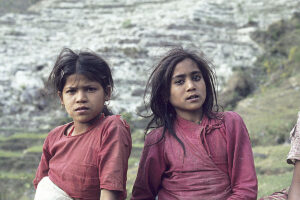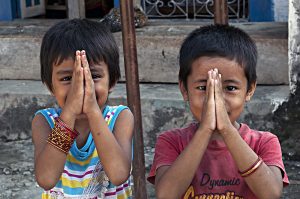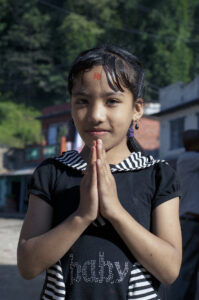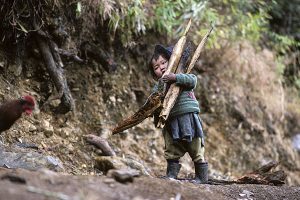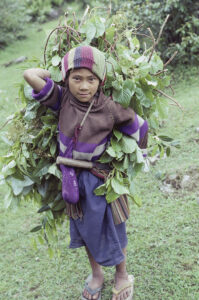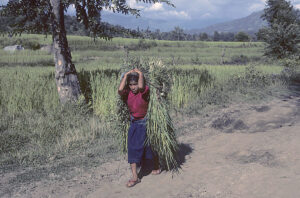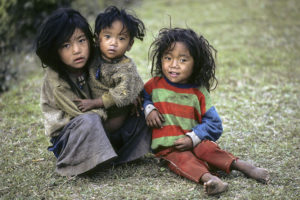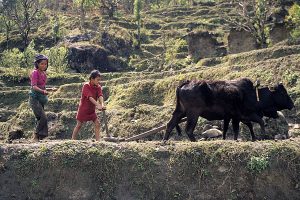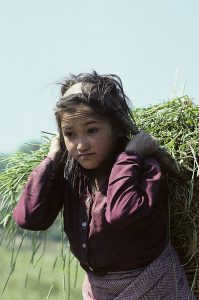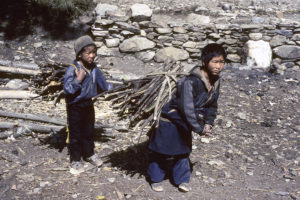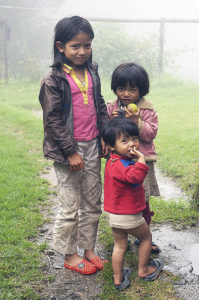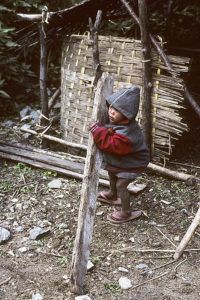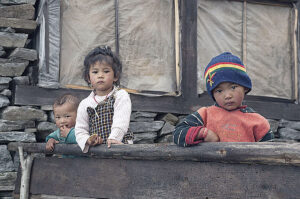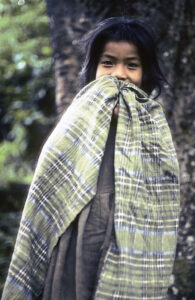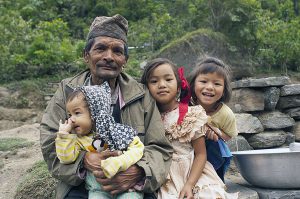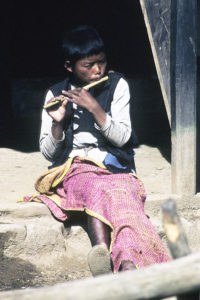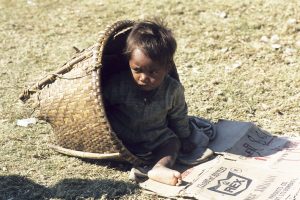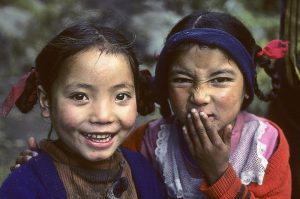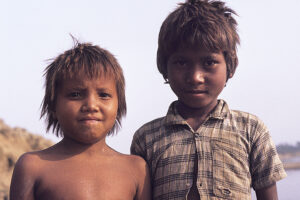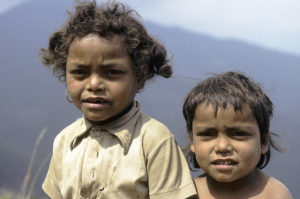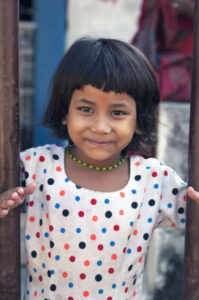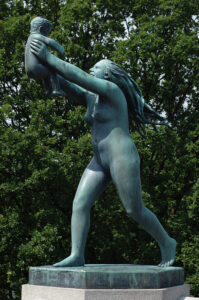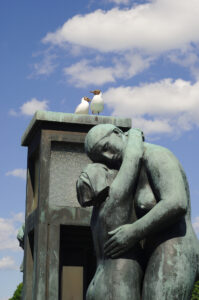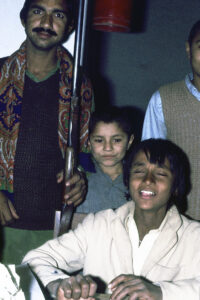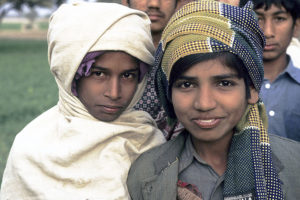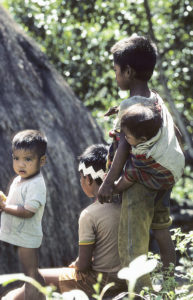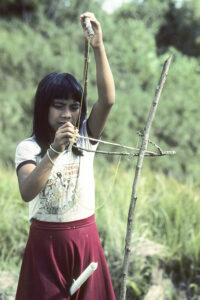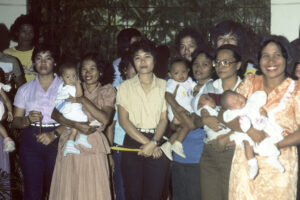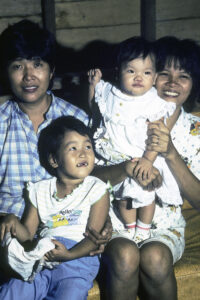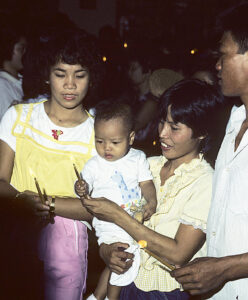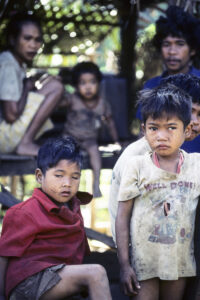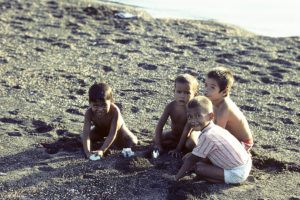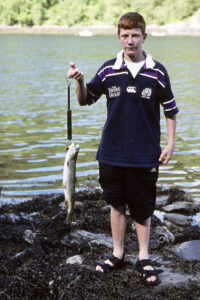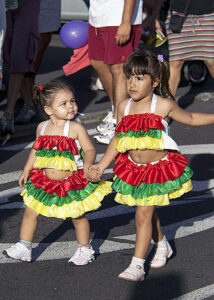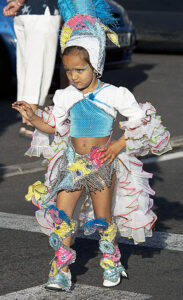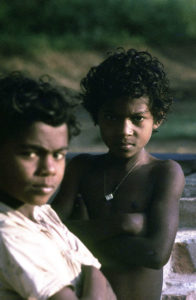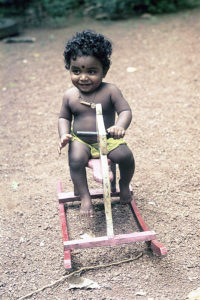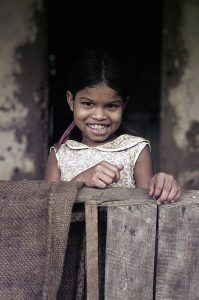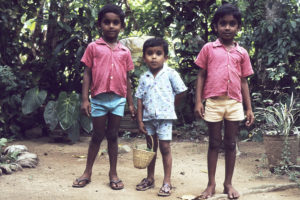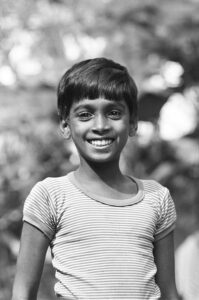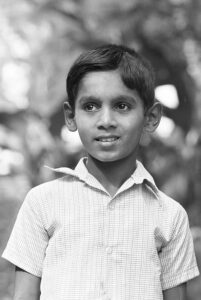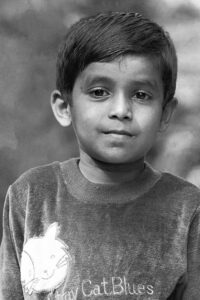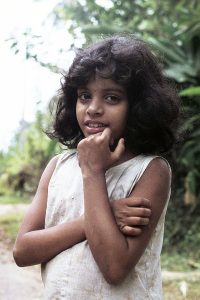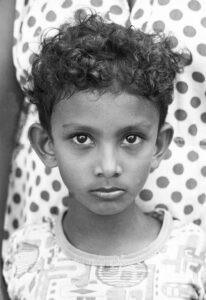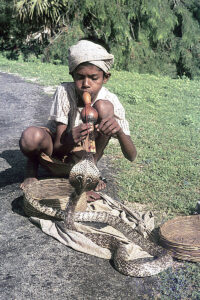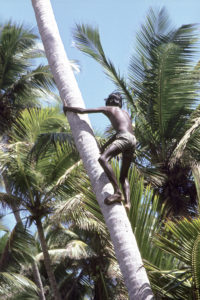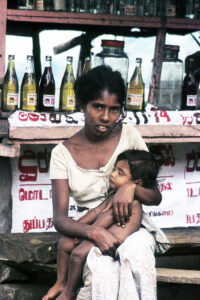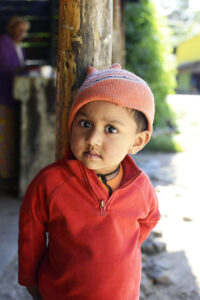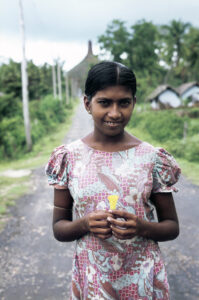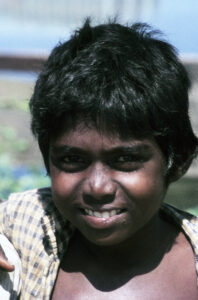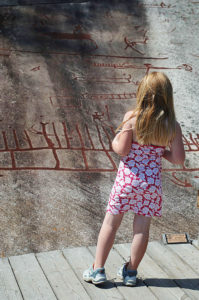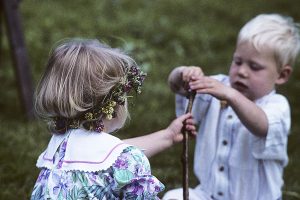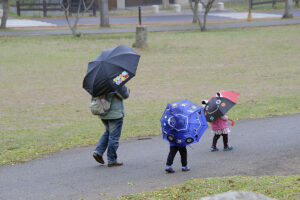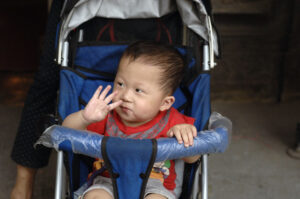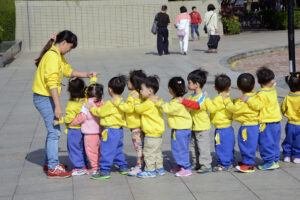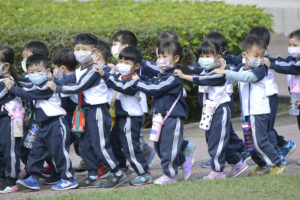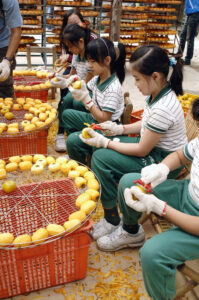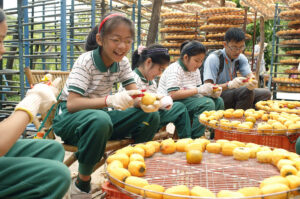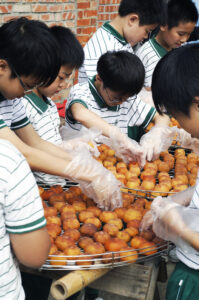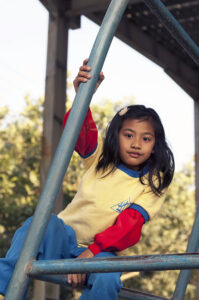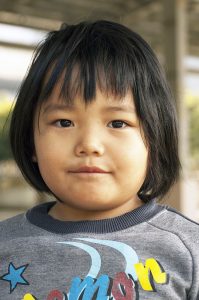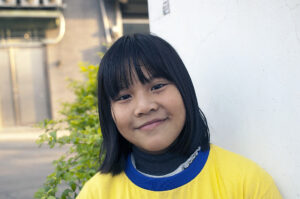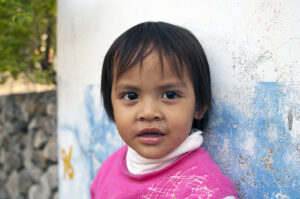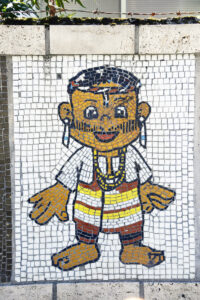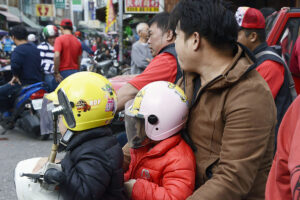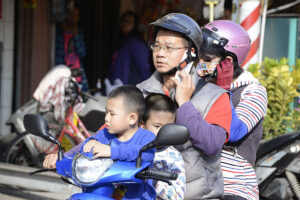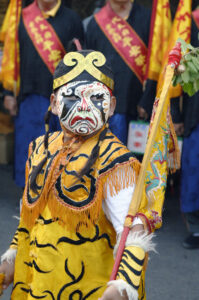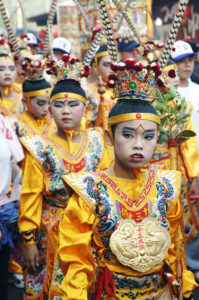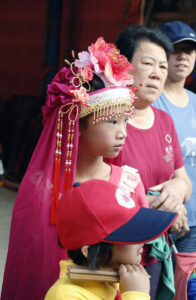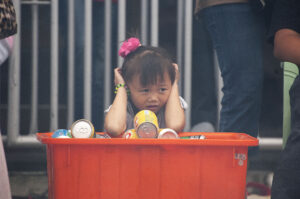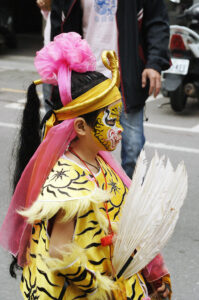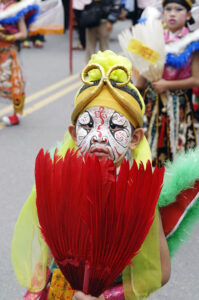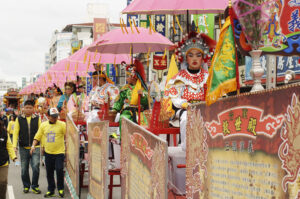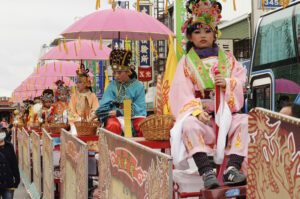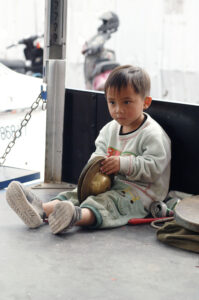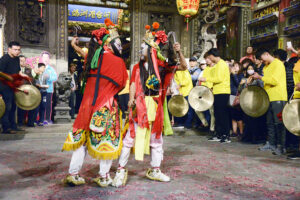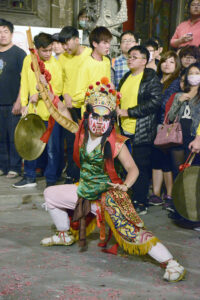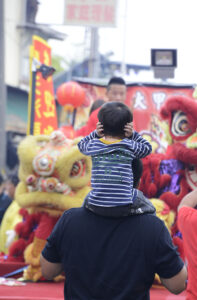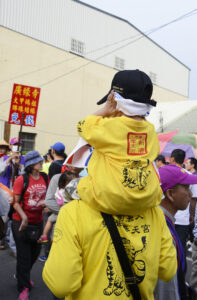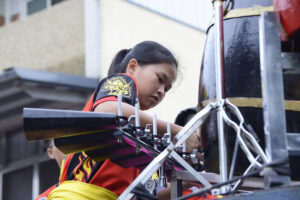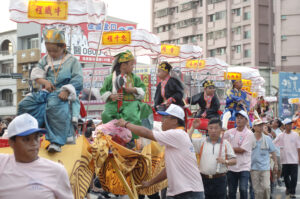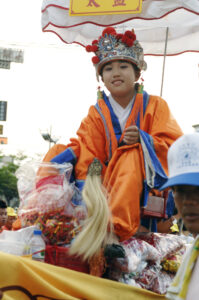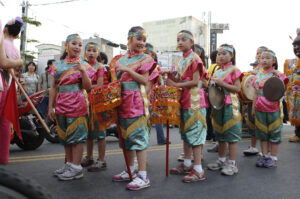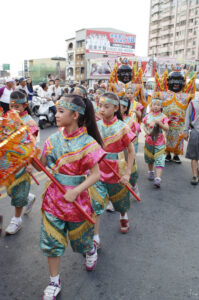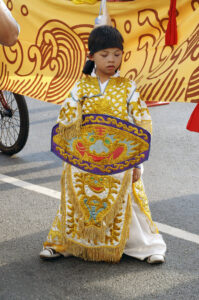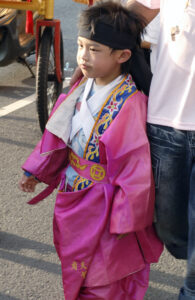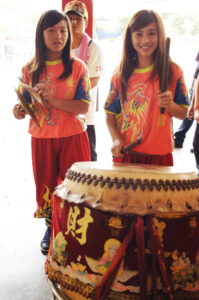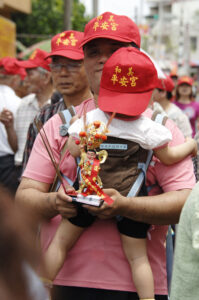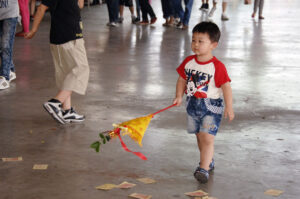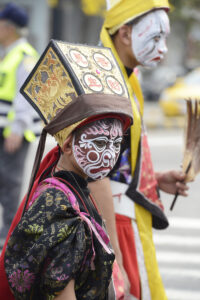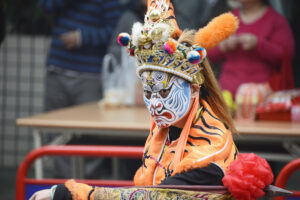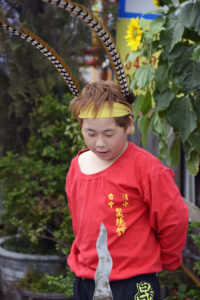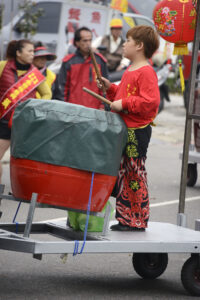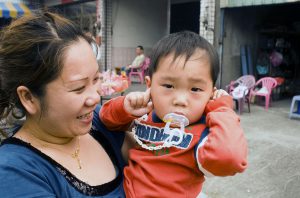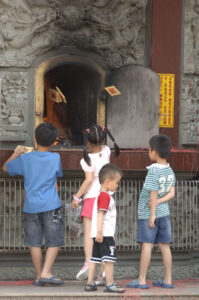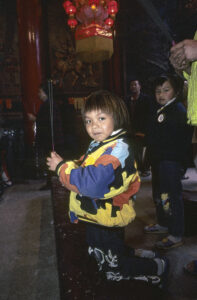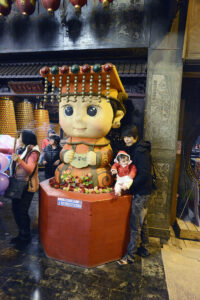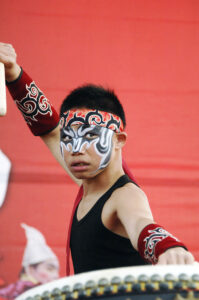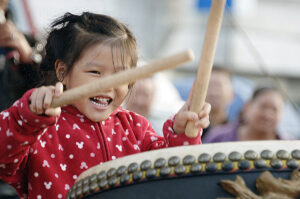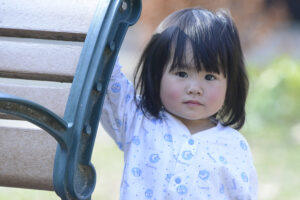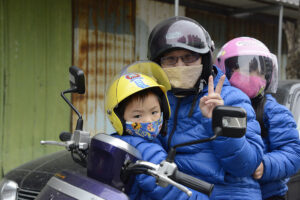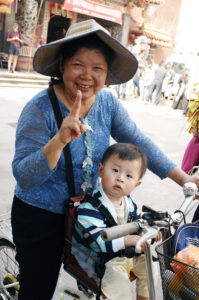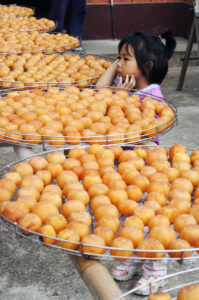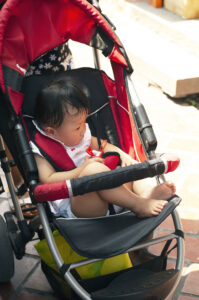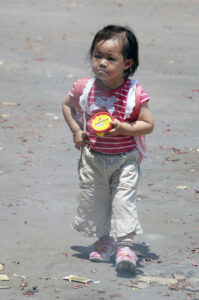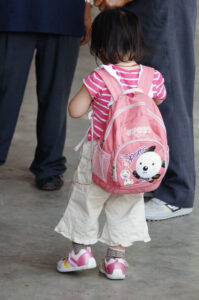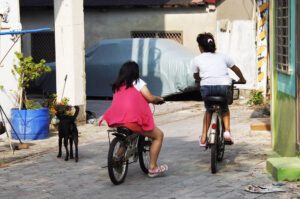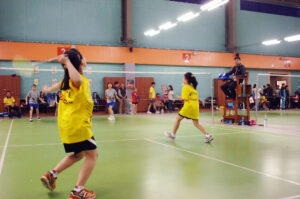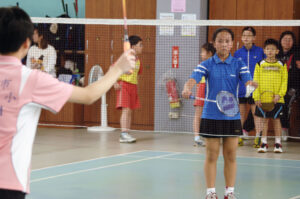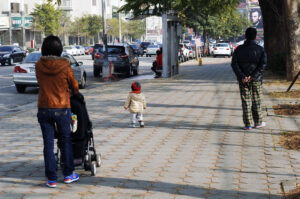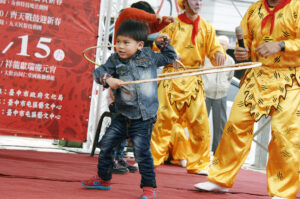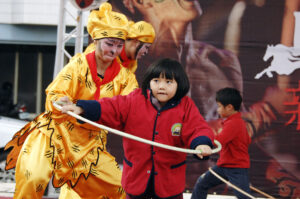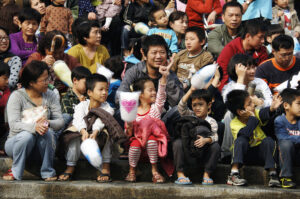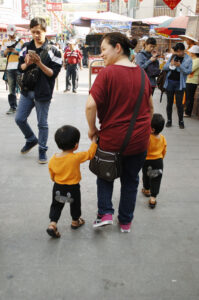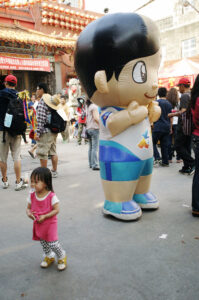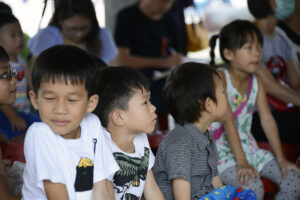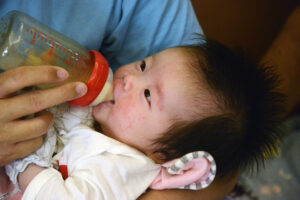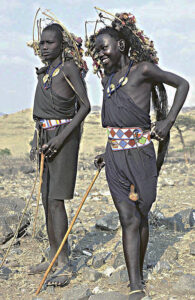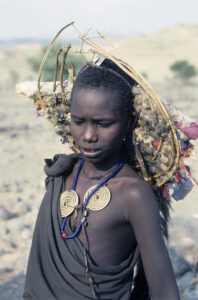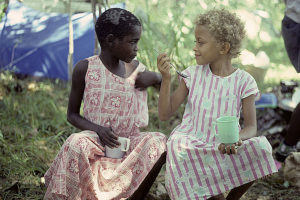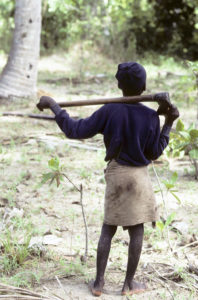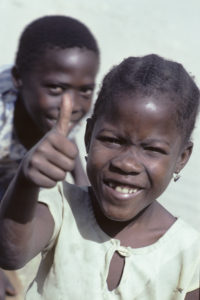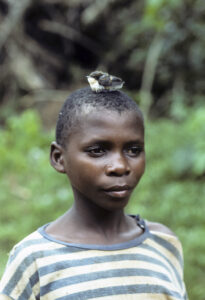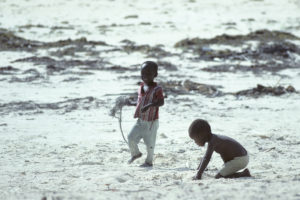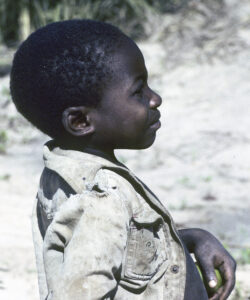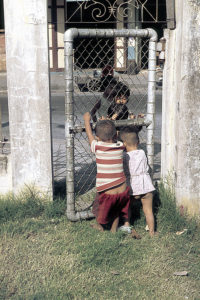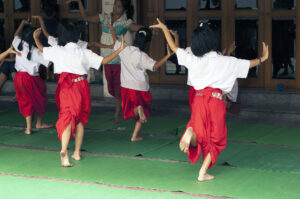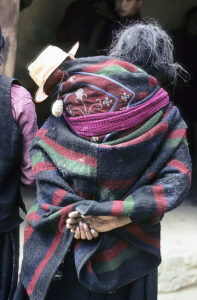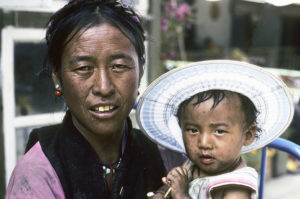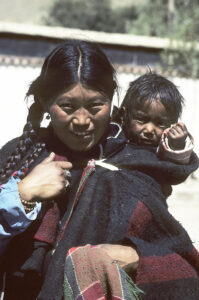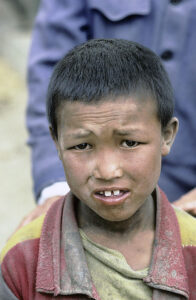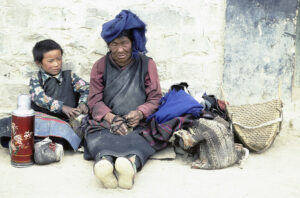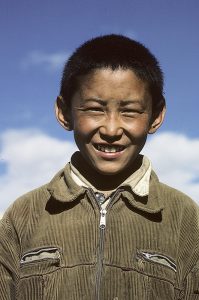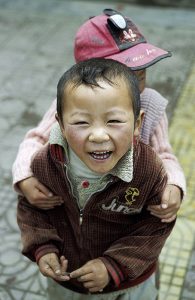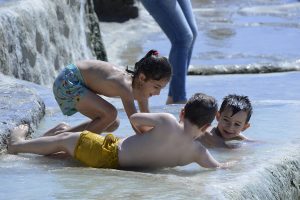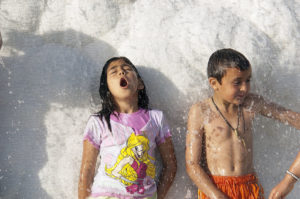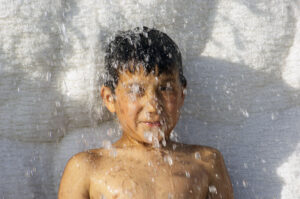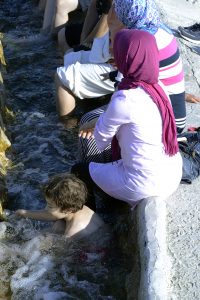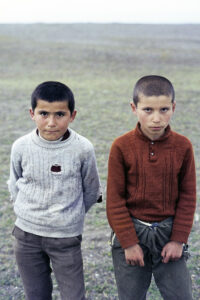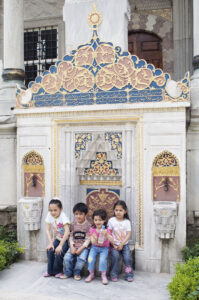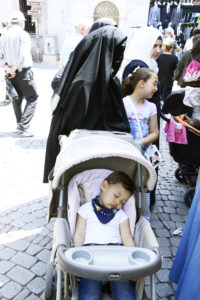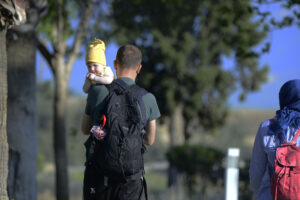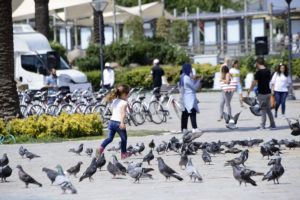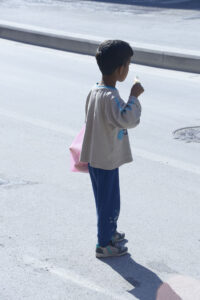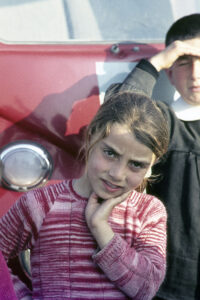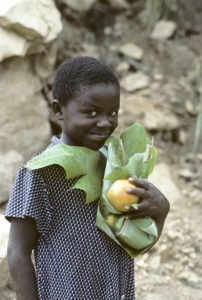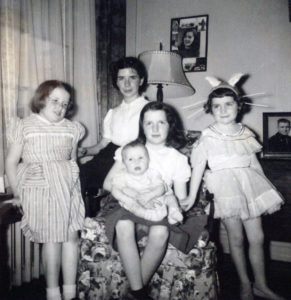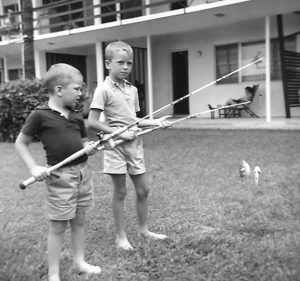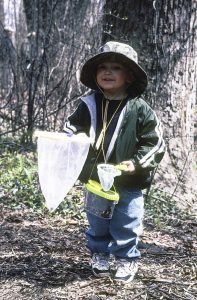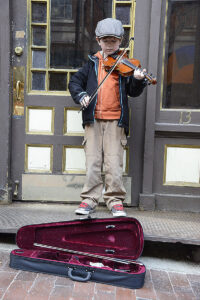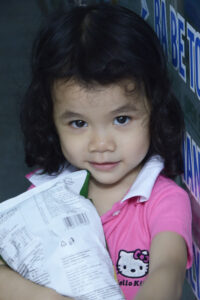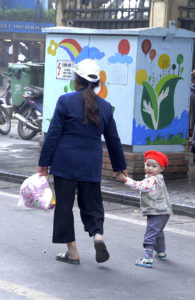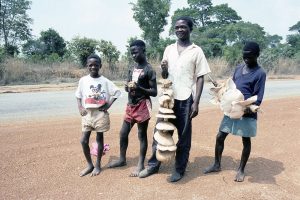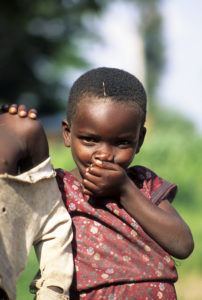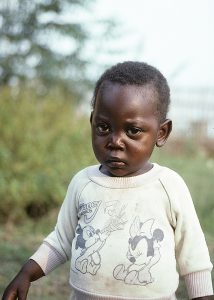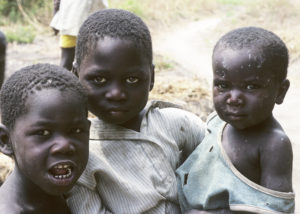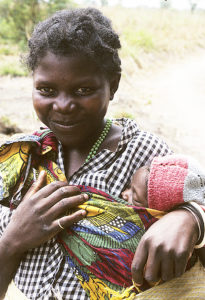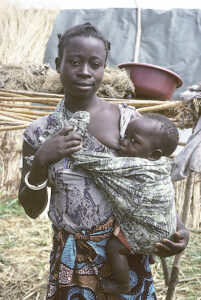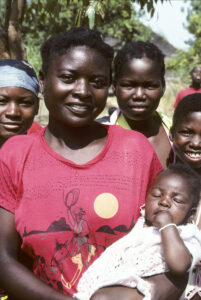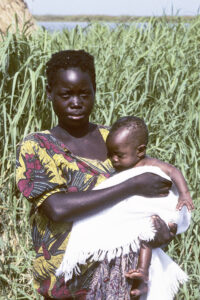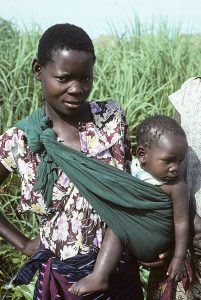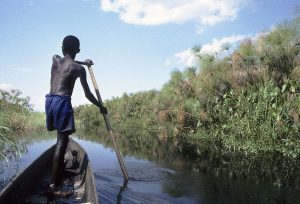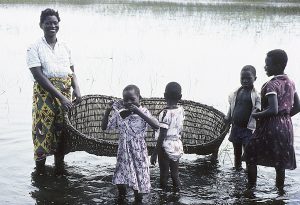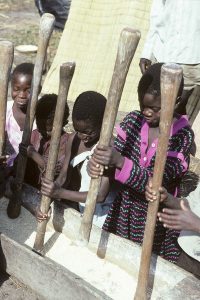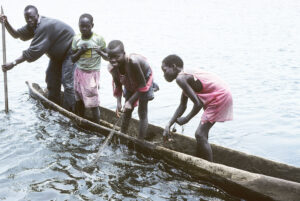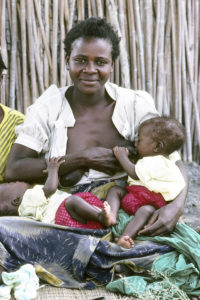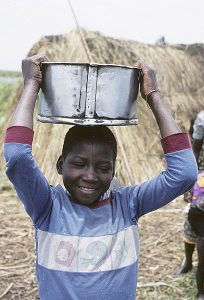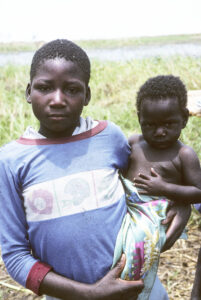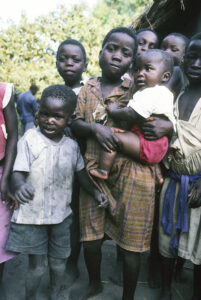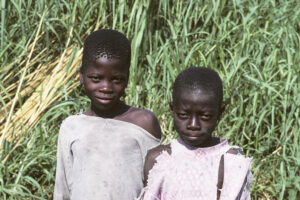Children around the world
“Now, how do I solve this problem?” – Child with mobile phone, Istanbul, Turkey. (Photo copyright © by Kaj Halberg)
Kindergarten children, visiting a city park, Taichung, Taiwan. (Photo copyright © by Kaj Halberg)
Mother and child, Changdam, Langtang Valley, Nepal. (Photo copyright © by Kaj Halberg)
Children on the beach, Tortuguero, Limón, Costa Rica. (Photo copyright © by Kaj Halberg)
Unga school boys in their class room, Ncheta Island, Bangweulu Swamps, northern Zambia. (Photo copyright © by Kaj Halberg)
This boy participates in the annual Lantern Festival in the city of Taitung, Taiwan. During this festival, volunteers undress to represent Handan-yeh, the Daoist money god. As he dislikes cold, people shell the volunteer with firecrackers to heat him up. This picture shows the boy prior to the bombardment. (Photo copyright © by Kaj Halberg)
Hush, little baby, don’t say a word
Mama’s gonna buy you a mockingbird
And if that mockingbird won’t sing
Mama’s gonna buy you a diamond ring
And if that diamond ring turns brass
Mama’s gonna buy you a looking glass
And if that looking glass gets broke
Mama’s gonna buy you a billy goat
And if that billy goat won’t pull
Mama’s gonna buy you a cart and bull
And if that cart and bull turn over
Mama’s gonna buy you a dog named Rover
And if that dog named Rover won’t bark
Mama’s gonna buy you a horse and cart
And if that horse and cart fall down
You’ll still be the sweetest little baby in town
So hush little baby, don’t you cry
Daddy loves you and so do I!
Traditional song, possibly originating in the southern United States.
“One morning, somewhere between the towns of Giresun and Bulançak, we are awoken by shouting children. We arrived late in the evening, and now we realize that we have parked near a village school. Our cars are surrounded by lovely and curious children, who talk non-stop, handing us nuts, flowers, and bread. We join them to the school, where the friendly teachers invite us inside.
In the evening, we are paid a visit by two peasant girls, dressed in the local red women’s dress. They are spectacular, but when I try to take pictures, they run away, giggling. The kids assist us in making a fire, and we chat with them, until their parents call them to their homes.”
Quote from the page Travel episodes – Iran & Turkey 1973: “Kurdistan! Bum-bum-zip!”
We woke up to discover that we had parked just outside a village school. In this picture, we are posing with teachers and students in front of the school. My companion Arne is wearing a green shirt, I a blue. The young man wearing a checkered shirt is a German we travelled with for about a week. (Photo copyright © by Kaj Halberg)
Austria
Wearing traditional dresses, these children participate in a music festival in the village of Prägraten, Virgen Valley, Tyrol. (Photos copyright © by Kaj Halberg)
Cambodia
The Khmer are the most numerous people in Cambodia, accounting for over 97% of the 16 million people in the country. They are descended from the founders of the Khmer Empire (802-1431 A.D.), foremost among Southeast Asian Hindu kingdoms. This empire left a superb legacy in the form of the Angkor ruins. The pictures below are all from the Angkor area.
Little Khmer boy, drinking from a coconut. (Photo copyright © by Kaj Halberg)
Khmer couple (the wife is pregnant) with their daughter, 3 years old, in her new flashy school uniform, Siem Reap. (Photos copyright © by Kaj Halberg)
Khmer children, playing outside their home, Banteay Srey. (Photo copyright © by Kaj Halberg)
This Khmer girl is taking care of her infant brother. (Photo copyright © by Kaj Halberg)
Khmer children, collecting edible seeds among the roots of huge tree, Tetrameles nudiflora, growing among the ruins of Ta Prohm. (Photo copyright © by Kaj Halberg)
Khmer boy with balloon, Banteay Srei. (Photo copyright © by Kaj Halberg)
Tonle Sap in western Cambodia is the largest lake in Southeast Asia. This lake is home to a rather large group of Vietnamese, living in so-called ‘floating villages’ – houses built on pontoons or rafts, anchored to the lake bottom. Other pictures from this area may be seen on the page Culture: A place to live, and Culture: Boats and ships.
Children in a Vietnamese ‘floating village’, Tonle Sap. They learn to punt a boat from an early age. (Photos copyright © by Kaj Halberg)
Cameroun
Woman with her child at a market, southeast of Ngaunderé. (Photo copyright © by Kaj Halberg)
China
The Yunnan and Guizhou Provinces of south-western China are home to approximately 50 tribal peoples, who often wear very colourful traditional dresses. Other pictures, depicting these tribes, are shown on the page People: Chinese minorities.
Girls of the Bai minority, clad in traditional dress, pose for tourists, Dali, Yunnan. (Photos copyright © by Kaj Halberg)
This Shuei tribal woman carries her child in a traditional backpack, Guizhou. (Photos copyright © by Kaj Halberg)
Yi women, clad in traditional dresses, shop at a market in Yuanyang, carrying their children on their back. (Photos copyright © by Kaj Halberg)
This little Yi girl is playing with bits of banana leaves, used by her parents to wrap around goods, which they sell at a market in Yuanyang. (Photo copyright © by Kaj Halberg)
Young Yi mother, Yuanyang. (Photo copyright © by Kaj Halberg)
Yi boys, playing with a wheelbarrow, Guizhou. (Photo copyright © by Kaj Halberg)
Mother and son with rhododendron flowers, Wumeng Shan Mountains, Guizhou. (Photo copyright © by Kaj Halberg)
Grimy little girl, enjoying a bottle of water, Guizhou. (Photos copyright © by Kaj Halberg)
Woman and child, buying oranges from a street vendor, Guiyang, Guizhou. (Photo copyright © by Kaj Halberg)
This little boy has fun, playing on a toy police motorcycle, Guiyang, Guizhou. Note his fancy hairstyle. (Photo copyright © by Kaj Halberg)
Little girl, eating with chopsticks, Yangshuo, Guangxi Zhuang. (Photo copyright © by Kaj Halberg)
Giggling school girls, Guiyang, Guizhou. (Photo copyright © by Kaj Halberg)
Comoro Islands
These girls in the city of Moroni, Grande Comore, assist their mother, peeling cooking bananas. (Photo copyright © by Kaj Halberg)
As rain starts pouring, these girls, living at the outskirts of Moroni, run to seek shelter. (Photo copyright © by Kaj Halberg)
When a companion and I were walking down this road near Itsoundzou, Grande Comore, children were fleeing in all directions. Obviously, foreigners were a rare sight in this village. (Photo copyright © by Kaj Halberg)
Children, Moroni, Grande Comore. (Photo copyright © by Kaj Halberg)
Boy, Iconi, Grande Comore. (Photo copyright © by Kaj Halberg)
Costa Rica
Tortuguero is a small island in the province of Limón – a very peaceful place with a friendly and relaxed population.
Little girl of mixed Spanish and African origin, Tortuguero. (Photo copyright © by Kaj Halberg)
Evening light illuminates children on swings, Tortuguero. (Photo copyright © by Kaj Halberg)
Little girl in her finest dress, Tortuguero. (Photo copyright © by Kaj Halberg)
Denmark
This little girl is sitting in a field, full of dandelions (Taraxacum officinale), central Jutland. This plant is described on the page Plants: Plants in folklore and poetry. (Photo copyright © by Kaj Halberg)
Despite being somewhat sunburned, this little boy is enjoying his sandwich at a beach on the island of Lyø, Funen. (Photo copyright © by Kaj Halberg)
This happy little boy is well dressed for cold weather. (Photo copyright © by Kaj Halberg)
Danish postcard from c. 1920, depicting a little girl, dressed up for a studio photograph. (Photo: Public domain)
During forest walks in eastern Jutland, this little girl got tired. In the upper picture, she is sleeping in the child carrier on her father’s back, and the lower picture shows her, riding on her mother’s shoulders. (Photos copyright © by Kaj Halberg)
Typical girl of the blond, Nordic type, 12 years old, Zealand. (Photo copyright © by Kaj Halberg)
Woman, nursing her baby, Jutland. (Photos copyright © by Kaj Halberg)
A little girl and her father enjoy a merry-go-round, Bornholm. (Photo copyright © by Kaj Halberg)
Little Danish girl in a photo studio, anno 1946. (Photo copyright © by Kaj Halberg)
This one-year-old boy is enjoying a bath in the kitchen sink, Copenhagen. (Photo copyright © by Kaj Halberg)
Following a heavy rain shower, this little boy has fun, splashing in a puddle, Jutland. (Photo copyright © by Kaj Halberg)
Little boy, playing with a bucket, Jutland. (Photo copyright © by Kaj Halberg)
During a trip to the Laxá Valley, northern Iceland, this little Danish boy is admiring a chick of golden plover (Pluvialis apricaria). (Photo copyright © by Kaj Halberg)
Little girls, playing with flower pots in a wash tub, Jutland. (Photo copyright © by Kaj Halberg)
Little boys, Jutland. (Photos copyright © by Kaj Halberg)
While his mother is busy filming with her video camera, this little boy is more interested in my doings. – Bornholm. (Photo copyright © by Kaj Halberg)
Little boy, playing on the floor, Jutland. (Photo copyright © by Kaj Halberg)
This sculpture, depicting a mother and daughter, clad in local dresses, adorns the graveyard at Sønderho, Fanø, Jutland. (Photo copyright © by Kaj Halberg)
Ethiopia
Ethiopia is home to a multitude of peoples, the largest of which are the Amhara, counting about 20 million, or c. 27% of the country’s population. The pictures below show children in various regions of this vast country. Other pictures may be seen on the page Portraits, and in the gallery at People: Tribals of Ethiopia.
Amhara herding boys – and a shy girl, Chacha. (Photos copyright © by Kaj Halberg)
This Amhara girl is taking care of a smaller sibling, Gosh Meda. (Photo copyright © by Kaj Halberg)
Oromo children, herding cattle, west of Dinsho, Bale Mountains. (Photos copyright © by Kaj Halberg)
This boy is peeping through a fence, Negelle. (Photo copyright © by Kaj Halberg)
Children, carrying sacks of fodder, Bahir Dar, Lake Tana. (Photos copyright © by Kaj Halberg)
This young priest is blowing a horn during the Christian festival Timkat, celebrated in the town of Lalibela. This festival is described on the page Travel episodes – Ethiopia 1996: Timkat – a Christian festival. (Photo copyright © by Kaj Halberg)
Shy young girls, one of them with a peculiar hairstyle, Lalibela. (Photo copyright © by Kaj Halberg)
Baby on mother’s back, Lalibela. Note the hairstyle. (Photo copyright © by Kaj Halberg)
Little boy, Lalibela. (Photo copyright © by Kaj Halberg)
‘Is he dangerous?’ this baby on mother’s back seems to think. – Lalibela. (Photo copyright © by Kaj Halberg)
France
Multi-ethnic kindergarten children, Paris. (Photos copyright © by Kaj Halberg)
Germany
Well-fed baby, being dried after his bath, near Marburg. (Photo copyright © by Kaj Halberg)
Guatemala
My adventures in Guatemala are related on the page Travel episodes – Guatemala 1998: Country of the Mayans.
Most women and many girls in this country wear a gorgeous blouse, called a huipil, consisting of several layers of cloth, sown together into intricate patterns. Every village in Guatemala has its own distinct huipil colours and patterns, and almost every woman weaves the cloth for her huipil herself. These gorgeous blouses are not only worn at religious festivals or other important events, as one might judge from the beauty of them, but constitute a part of the daily dress.
Wearing a blue huipil, this little girl is assisting her mother, washing clothes, Santa Catarina Palomo, Lago Atitlan. (Photo copyright © by Kaj Halberg)
Antigua, former capital of Guatemala, is a gorgeous old Spanish colonial town, with cobbled streets, pastel-colored houses, arches across the streets, and a huge number of spectacular churches. The pictures below were all taken in this city.
“Grandfather, something is wrong with my bicycle!” (Photo copyright © by Kaj Halberg)
Carrying a smaller sibling on her back, this girl has brought goods to a market to be sold. (Photo copyright © by Kaj Halberg)
Little street vendor, selling souvenirs in the city square. (Photo copyright © by Kaj Halberg)
Wrapped in a cloth on the back of their mothers, these children are very snug, while the women are busy shopping at a market in Antigua. (Photos copyright © by Kaj Halberg)
At the market in Antigua, this woman is waiting to sell fruits, while her child is sleeping, wrapped in a cloth on her back. (Photo copyright © by Kaj Halberg)
Mother and child in the town of Todos Santos. (Photo copyright © by Kaj Halberg)
Holland
Little girls, clad in local dresses of bygone days, Enkhuizen Outdoor Museum, West-Friesland. (Photo copyright © by Kaj Halberg)
Iceland
For the major part of the year, Icelandic sheep roam the mountains freely, but when winter is approaching, they are driven into a large enclosure, where they are divided, according to owners, who recognize their animals from their ear-marks. They then drive the sheep back to their farms on lorries.
This little boy is assisting his parents, rounding up sheep at Fnjóská, near Akureyri. (Photo copyright © by Kaj Halberg)
Boy and golden retriever, watching rounding-up of sheep, Fnjóská. (Photo copyright © by Kaj Halberg)
India
Aboriginals of India are small people, many of Australoid descent, which lived in the forests for thousands of years. When the Dravidians, and later the Aryans, invaded India, these tribal peoples were driven into remote areas. Many still live in the states of Odisha (Orissa), Chattisgarh, and Madhya Pradesh.
Sadly, the culture and way of living of these peoples are rapidly disintegrating, and many have lost their land to entrepreneurs, who extract coal, iron and other minerals from it. Owners of paper factories have persuaded several of the tribes to plant eucalyptus trees on their land, promising these people a large outcome from these trees. However, they omit to inform them that eucalyptus trees dry out the soil, often leading to scarcity of water in areas, which were previously covered in lush forest.
When the pictures below were taken in 1997, many tribal peoples had still preserved part of their traditional ways. Other pictures are shown on the page People: Vanishing peoples of India.
Young Sabara mother with her infant son, Sabari River, Odisha. (Photo copyright © by Kaj Halberg)
Sabara children, near the Sabari River. (Photos copyright © by Kaj Halberg)
Shy Mali girls in a village near Jeypore, Odisha. One of them has smeared yellow paste in her face, presumably to protect her skin from the fierce sunshine. (Photo copyright © by Kaj Halberg)
This Paraja girl, her hair adorned with flowers, is selling peas at a market in Tanginiguda, Odisha. (Photo copyright © by Kaj Halberg)
Gadaba tribal girl with her grandfather, near Jeypore. (Photo copyright © by Kaj Halberg)
In areas dominated by Tibetan Buddhism, or Lamaism, many boys spend longer or shorter periods of time as apprentices in local monasteries, called gompas. These buildings, and other aspects of Buddhism, are described on the page Religion: Buddhism.
Lamaism is the dominant religion in the province of Ladakh, north-western India. These boys are apprentices in a monastery in the village of Lamayuru. (Photos copyright © by Kaj Halberg)
At the partition of India in 1947, millions of Muslims emigrated to the new state of Pakistan. Many stayed in India, though, and today Muslims constitute about 170 million people, or c. 14 % of the population, scattered throughout the nation. The following pictures show Muslim children at various places in India.
This little boy in the city of Kullu, Himachal Pradesh, watched me intensely for a long time, before he decided that I was not dangerous. (Photo copyright © by Kaj Halberg)
Best of friends, Kullu. (Photo copyright © by Kaj Halberg)
This little girl assists her mother, harvesting saffron flowers, Pampur, Kashmir. (Photo copyright © by Kaj Halberg)
Children, Pahalgam, Kashmir. (Photos copyright © by Kaj Halberg)
Young Muslim with a little girl, Jaipur, Rajasthan. (Photo copyright © by Kaj Halberg)
These girls, in the city of Bijapur, Karnataka, are dressed up for a Muslim wedding. Patterns have been applied to their hands, using dye made from the henna plant. This species is described on the page Plants: Plants in folklore and poetry. (Photo copyright © by Kaj Halberg)
The following three images depict Indian school children.
These children in the city of Jodhpur, Rajasthan, are transported to school in a very unusual ‘school bus’ – a pushcart! (Photo copyright © by Kaj Halberg)
Bhokta tribal children, photographed during a lesson in a village school near Bodhgaya, Bihar. (Photo copyright © by Kaj Halberg)
This girl in Leh, Ladakh, has strapped her school bag around her forehead. (Photo copyright © by Kaj Halberg)
Girl in morning light, Udaipur, Rajasthan. (Photo copyright © by Kaj Halberg)
Dressed in their best finery, these women celebrate a Hindu festival in the village of Seventri, Rajasthan. (Photos copyright © by Kaj Halberg)
Little girl, Seventri. (Photo copyright © by Kaj Halberg)
Little boy at a village well, Seventri. (Photo copyright © by Kaj Halberg)
This Changpa father and son, encountered on the Pulo Konka La Pass in Ladakh, live as nomads during the summer months. (Photo copyright © by Kaj Halberg)
The parents of this little girl in Varanasi, Uttar Pradesh, wished to take a picture of her beside the donkey. However, she seems to be a little afraid of it. (Photo copyright © by Kaj Halberg)
Kindergarten children, Mukkali, Kerala. (Photo copyright © by Kaj Halberg)
Orphaned boy, entertaining people by walking on stilts while playing on a tabla, Leh, Ladakh. (Photo copyright © by Kaj Halberg)
The vast Thar Desert stretches across the state of Rajasthan, and further west into Pakistan. The main part of this desert is level sand or gravel plains with scattered bushes and trees.
This desert is surprisingly densely populated, inhabited by a number of peoples, who belong to various religions, such as Jains, Bishnoi, Muslims, and Hindu Rajputs. Scattered across the bleak landscape lie numerous towns and villages. One such town is Jaisalmer, close to the Pakistani border, which was founded in 1156 by a Rajput prince, Roa Rawal Jaisal.
This fascinating area is described in depth on the pages Travel episodes – India 1986: Sir, would you like to see this peacock?, and India 2003: Camel safari in the Thar Desert.
Little girls, dressed in their best finery, Jaisalmer. (Photos copyright © by Kaj Halberg)
This little girl is playing on a dilapidated window shutter, Jodhpur. Not a very safe place to play, as the shutter may fall down any time. (Photo copyright © by Kaj Halberg)
This little girl has just emptied a bucket of garbage, Jodhpur. (Photo copyright © by Kaj Halberg)
During a wedding procession in Jaisalmer, the groom is riding a horse with a child behind – presumably his little sister. (Photo copyright © by Kaj Halberg)
This girl is carrying water in a brass jar, near Jodhpur. (Photo copyright © by Kaj Halberg)
On a chilly morning in the Thar Desert, this boy and his father are warming themselves at a tiny fire. (Photo copyright © by Kaj Halberg)
This Muslim and his children enjoy the evening, sitting on a sand dune near the village of Bambara, situated in the heart of the Thar Desert, near the border to Pakistan. (Photo copyright © by Kaj Halberg)
Muslim women with their children and grandchildren, Bambara, Thar Desert. (Photos copyright © by Kaj Halberg)
Muslim children, Bambara. A white paste has been applied to their face to protect the skin from the fierce sunshine. (Photo copyright © by Kaj Halberg)
At the annual market on the shore of the Gandak River, near Sonpur, Bihar, this woman and her daughter are sound asleep among their belongings, despite the tremendous noise from numerous loudspeakers. (Photo copyright © by Kaj Halberg)
Pilgrims, waiting to enter Sri Venkatesvara, a temple dedicated to the Hindu god Krishna, Tirumalai, Andhra Pradesh. The boy has been tonsured, and lime applied to his skull. (Photo copyright © by Kaj Halberg)
Young mother, spoon-feeding her child, Varanasi. (Photo copyright © by Kaj Halberg)
Wait for me! – Bringing home her family’s cows shortly before dusk, this girl in the village of Kaza, Spiti, Himachal Pradesh, is holding on to the tail of one of the cows. Usually, Himalayan cattle owners do not let their animals graze out at night for fear of attacks from wolves or bears. (Photo copyright © by Kaj Halberg)
Tamils are a people of South India, numbering around 76 million, thus being the largest Dravidian people. They constitute about 6% of the population in India, 15% in Sri Lanka, 6% in Mauritius, 7% in Malaysia, and 5% in Singapore.
Tamil children, Valparai, West Ghats (top), and Tarangambadi (Tranquebar), both in Tamil Nadu. (Photos copyright © by Kaj Halberg)
Village boys, Keoladeo National Park, Rajasthan. (Photo copyright © by Kaj Halberg)
This girl has been collecting ferns in the forest for her family’s evening meal, Asi Ganga Valley, Uttarakhand. (Photo copyright © by Kaj Halberg)
This boy works in a shop in Haridwar, Uttarakhand, selling seashells and conches. He demonstrates how to blow in a conch. (Photo copyright © by Kaj Halberg)
This little girl in the Markha Valley, Ladakh, is playing an ancient game. She throws several pebbles into the air, trying to grab more pebbles from the ground before catching the falling ones. (Photo copyright © by Kaj Halberg)
A wandering musician and his son enjoy a break outside the Mehrangarh Fort, Jodhpur, Rajasthan. The musician has only one leg – the artificial one is seen to the right. (Photo copyright © by Kaj Halberg)
Boys, carrying loads of empty sacks, Lata, Uttarakhand. (Photo copyright © by Kaj Halberg)
Holi is a Hindu spring festival, celebrating the god Krishna, and the victory of good over evil – a gay festival, in which people, regardless of caste, pelt each other with red, yellow, purple, or green powder, or with water, dyed with powder. For this reason, Holi has been dubbed The Festival of Colours.
My own ‘colourful’ adventures during this festival are related on the page Travel episodes – India 1991: Attending Hindu festivals in Rajasthan.
During Holi, this girl in Charbhuja, Rajasthan, has had her share of red dye. (Photo copyright © by Kaj Halberg)
Boys from the Markha Valley, Ladakh. (Photos copyright © by Kaj Halberg)
Women and child, Pondicherry (Puducherri), southern India. (Photo copyright © by Kaj Halberg)
Using his teeth, this little boy is tearing off the outer hard shell of a sugarcane stem, and then chews the white, sweet internal layer. – Kokkare Belur, near Mysore, Karnataka. (Photo copyright © by Kaj Halberg)
Indonesia
The Batak are a group of closely related Austronesian peoples, including the Karo, Pakpak, Simalungun, Toba, Angkola, and Mandailing, who live in a large area of northern Sumatra. My acquaintance with these people stems from a visit to Lake Toba in 1975.
Other pictures, depicting Batak people, are shown on several other pages on this website, including Culture: Musicians, and in the gallery at People: Tribals of the Sunda Islands.
Batak father and child, village of Lingga, near Lake Toba. (Photo copyright © by Kaj Halberg)
These Batak children have fun, bringing home water buffaloes after work in the paddy fields, Samosir Island, Lake Toba. (Photo copyright © by Kaj Halberg)
Batak girl, carrying a sibling on her back, Samosir Island. (Photo copyright © by Kaj Halberg)
Batak children, playing with bamboo stems, Samosir Island. (Photo copyright © by Kaj Halberg)
This Minangkabau tribal boy has been sprayed with mud from working in a paddyfield, Kotubaru, Sumatra. (Photo copyright © by Kaj Halberg)
Best of friends! – Kintamani, Bali. (Photo copyright © by Kaj Halberg)
Sasak tribal children, Senaru, Lombok. The girl in the bottom picture is carrying embers in a bowl. (Photos copyright © by Kaj Halberg)
During a Hindu temple festival near Ubud, Bali, these small boys are playing with a drum. (Photos copyright © by Kaj Halberg)
A sense of balance! – Woman with child and burden, Ubud. (Photo copyright © by Kaj Halberg)
Little boy – large gun, Ubud. (Photo copyright © by Kaj Halberg)
This mother and her child have fallen asleep on the sidewalk, Ubud. (Photo copyright © by Kaj Halberg)
Little boys, Ubud. The smallest one is a bit wary of me. (Photo copyright © by Kaj Halberg)
Children in a playground, Ubud. (Photo copyright © by Kaj Halberg)
The headdress of this Muslim woman on the island of Lombok is a beautifully folded towel. (Photo copyright © by Kaj Halberg)
Iran
Boy in the city of Bandar Shah, south-east of the Caspian Sea. (Photo copyright © by Kaj Halberg)
The Lur are a people, living in the Zagros Mountains, south-western Iran. My at times rather bizarre adventures in this area are related on the page Travel episodes – Iran 1973: In the mountains of Luristan.
Lur herding boys, two of them wearing huge traditional herders’ felt cloaks. (Photo copyright © by Kaj Halberg)
Lur boy, guarding his family’s sheep. (Photo copyright © by Kaj Halberg)
Lur mother and child in the village of Mirabad. (Photo copyright © by Kaj Halberg)
Lur children in Mirabad. (Photos copyright © by Kaj Halberg)
Iraq
Farmers with their children, Aziziyah, southern Iraq. Coffee pots of various sizes are seen in the lower picture. (Photos copyright © by Kaj Halberg)
Men and boys, Aziziyah. (Photos copyright © by Kaj Halberg)
For thousands of years, a huge marsh area in southern Iraq, between the Euphrates and Tigris Rivers, was the home of the Madan tribe, whose way of life was completely adapted to the wet habitat. They moved about in canoes, built their reed houses on islets, and made a living by hunting and fishing, growing rice, and raising water buffaloes.
The regime of Saddam Hussein Abd al-Majid al-Tikriti (1979-2003) put an end to their way of life by draining the marshes, as a retaliation for the Madan siding with the Americans during the First Gulf War (1990-1991).
This interesting wetland is presented in detail on the pages Travel episodes – Iraq 1973: The hospitable mudir, and Iraq 1973: Dust storm and sheep’s head.
These pictures of Madan men with infants were taken in 1977, prior to the destruction of the marshes. (Photos copyright © by Kaj Halberg)
Madan girl, cutting reeds (Phragmites australis) to be used as cattle fodder. (Photo copyright © by Kaj Halberg)
This Madan girl makes flat cakes from cow dung, to be dried in the sun and later used as fuel. (Photo copyright © by Kaj Halberg)
Children in the village of Hamar, situated at the outskirts of the marshes. It is often the duty of Arabian girls, however young, to take care of a smaller sibling. (Photo copyright © by Kaj Halberg)
Jordan
Little Arab boys also have secrets! – Azraq. (Photo copyright © by Kaj Halberg)
School boys in their class room, Aqaba. (Photo copyright © by Kaj Halberg)
Kyrgyzstan
In the summertime, a small number of Kyrgyz still live a semi-nomadic life. This picture shows an elderly man with his grandchildren, photographed in the Karakol Valley, Tien Shan Mountains. (Photo copyright © by Kaj Halberg)
Children of different races can be the best of friends, as in this picture from Karakol, showing a Russian boy (left) and a Kyrghyz boy. (Photo copyright © by Kaj Halberg)
Malawi
Lake Malawi is the third-largest lake in Africa, 575 km long and up to 85 km wide, covering an area of c. 23,000 km2. The majority of the population of this area are various Bantu tribes, including the Achewa, who live around the south-western corner of the lake.
My adventures on board a ferry on this lake are related on the page Travel episodes – Malawi 1997: A three-day ferry cruise on Lake Malawi.
Girls on board the ferry ‘M/V Ilala’, Lake Malawi. (Photo copyright © by Kaj Halberg)
This boy has paddled his dug-out canoe out to our ferry, hoping to sell a few mangoes to passengers. Soon a furious haggling over the price begins, and when the two parties have come to an agreement, the fruits are handed up, and coins are tossed into the canoe. (Photo copyright © by Kaj Halberg)
Achewa mothers on their way to our ferry, carrying infants and goods. (Photos copyright © by Kaj Halberg)
Achewa children, bathing near Cape Maclear in the south-western corner of the lake. (Photos copyright © by Kaj Halberg)
This happy little Achewa boy from the village of Chembe, Lake Malawi, is on his way out into the world. (Photo copyright © by Kaj Halberg)
Achewa children, Chembe. (Photos copyright © by Kaj Halberg)
Achewa woman, cleaning sorghum seeds, Chembe. (Photo copyright © by Kaj Halberg)
Boy at a market, selling second-hand clothes in the town of Lilongwe. (Photo copyright © by Kaj Halberg)
Malaysia
The indigenous population of Borneo consists of various Malayan tribes, known by the common name Dayaks, including Punan and Iban. My stay in a Punan village is related on the page Travel episodes – Borneo 1975: Canoe trip with Punan tribals.
While breast-feeding her child, this Dayak woman has fallen asleep on the deck of a passenger boat, travelling up the Rajang River, Sarawak. (Photo copyright © by Kaj Halberg)
Dayak boys, Belaga, Rajang River. (Photos copyright © by Kaj Halberg)
Punan girls, pounding rice on the veranda in front of a longhouse along the Rajang River. With a graceful movement of her foot, one of the girls in the lower picture pushes back some of the rice into the pile, without making any pause in her pounding. (Photos copyright © by Kaj Halberg)
Punan children in a longhouse along the Rajang River. The turtles have been brought back to the longhouse as a kind of live provisions, which can be eaten when need be. (Photo copyright © by Kaj Halberg)
These Punan boys have invented an amusing game. Stark naked, they slide on their behind down the smooth surface of the mud, ending in the river with a splash. (This photo was kindly lent to me by Elisabeth Souvignier, copyright ©)
Formerly, the Punans were animists. On this small scaffold lie sacred stones, where, in the old days, pig blood was offered before the men went head-hunting. (Photo copyright © by Kaj Halberg)
Iban children with their mother inside their appartment in a modern longhouse, Sarawak. (Photo copyright © by Kaj Halberg)
Myanmar
Once in a while, this girl in Bagan would dance along the road, gracefully swaying her hips, while still balancing a large bucket of laundry on her head. (Photo copyright © by Kaj Halberg)
In Myanmar, a white paste is made from branches of the orange jessamine tree (Murraya paniculata), locally called thanaka. This paste protects the skin against the sun and also makes it smooth. (Photos copyright © by Kaj Halberg)
While his mother is praying, this little boy is busy with some toy, Shwedagon Pagoda, Yangon. (Photo copyright © by Kaj Halberg)
Nepal
The majority of the inhabitants in the Kathmandu Valley are Newars, a people of mixed Caucasian and Mongoloid origin.
This little Newar girl is eating the white flesh of a lychee fruit (Litchi chinensis), Kathmandu. (Photo copyright © by Kaj Halberg)
Newar kindergarten children, enjoying their lunch, Kathmandu. (Photo copyright © by Kaj Halberg)
This Newar boy in the village of Bungamati is wearing a topi, a typical Newari style hat. (Photo copyright © by Kaj Halberg)
Young Newar women with their children, Kathmandu Valley. (Photos copyright © by Kaj Halberg)
Newar child, ringing a bell outside a Hindu temple, Kathmandu. (Photo copyright © by Kaj Halberg)
The colourful Hindu festival of Bisket Jatra is celebrated with vigour in the city of Bhaktapur. During the festival, this Newar woman has wrapped a cloth around her sleeping child on her back. She has also applied charcoal around the eyes of the child to keep flies away. Bisket Jatra is described on the page Religion: Hinduism. (Photo copyright © by Kaj Halberg)
During Bisket Jatra, this Newar girl, dressed in her finery, is gathering coins from a shrine, which have been brought as an offering to the god Kalo Bhairab – the local name of the great god Shiva. Rice kernel have been applied to the red tika mark on her forehead, which is only done during major festivals. (Photo copyright © by Kaj Halberg)
About 500 years ago, the Sherpa, a Tibetan tribe of pastoral nomads, migrated south and settled in several separate areas: Langtang, Helambu, Solu-Khumbu, and Arun Valley in Nepal, and Darjiling in India. In Tibetan, sherpa means ‘a person from the East’, relating to the fact that the Sherpa originated in eastern Tibet. Today, they number about 150,000, and they still speak a Tibetan dialect.
Yolmu women with their children, Langtang Valley. The Yolmu are a branch of the Sherpa tribe. (Photos copyright © by Kaj Halberg)
From the safety on her mother’s back, this little Thakali girl in the Marsyangdi Valley is watching my doings intensely, probably evaluating whether I am dangerous or not. (Photo copyright © by Kaj Halberg)
This little girl is helping her father washing a carpet, Shyabru, Langtang Valley. (Photo copyright © by Kaj Halberg)
Boy with rhododendron flowers, Bharku, Langtang Valley. (Photo copyright © by Kaj Halberg)
This boy has fun, chasing feral pigeons, Durbar Square, Kathmandu. (Photo copyright © by Kaj Halberg)
Following the Chinese invasion of Tibet in the 1950s, thousands of Tibetans fled to Nepal and India. Today, they constitute a very prominent part of the population in Nepal, and Tibetan monasteries have been constructed several places.
During Losar, the Tibetan New Year, these Tibetan boys, clad in their best finery, pay a visit to the great Bodhnath Stupa in Kathmandu. This stupa is described on the page Religion: Buddhism. (Photo copyright © by Kaj Halberg)
Tibetan mother and child, Bodhnath. (Photo copyright © by Kaj Halberg)
This young Tibetan monk, participating in an initiation ceremony in a Tibetan monastery near the Bodhnath Stupa, Kathmandu, seems to be bored stiff. (Photo copyright © by Kaj Halberg)
Tibetan women with their children, Jhong Valley, Mustang. (Photos copyright © by Kaj Halberg)
Stark naked, apart from flip-flops and a rosary, this little Gurung boy enjoys a warm spring day, near Syange, Lower Marsyangdi Valley, Annapurna. The flowering tree near the suspension bridge is a coral tree, Erythrina stricta, described on the page Plants: Himalayan flora 2. (Photo copyright © by Kaj Halberg)
Walking down a lane in Bhaktapur, Kathmandu Valley, this boy is drinking from a bottle. (Photo copyright © by Kaj Halberg)
Girls, Pati Bhanjyang (top) and Kiul, Helambu. (Photos copyright © by Kaj Halberg)
Walking along the Rapti River, southern Nepal, this little girl has a firm grip in her grandmother’s skirt. To the right is a zebu ox, described in depth on the page Animals: Animals as servants of Man. (Photo copyright © by Kaj Halberg)
Girls on their way to school, Bungamati, Kathmandu Valley. (Photo copyright © by Kaj Halberg)
Girls, washing pots and pans in the polluted Vishnumati River, Kathmandu. (Photo copyright © by Kaj Halberg)
School children in the Kali Gandaki Valley, Annapurna. The girl to the left is of Mongolian origin, whereas the other one is Caucasian. (Photo copyright © by Kaj Halberg)
Limbu girls, doing homework, Hangdewa, near Taplejung. (Photo copyright © by Kaj Halberg)
Little girl with her mother’s sandals, Lower Marsyangdi Valley, Annapurna. (Photo copyright © by Kaj Halberg)
During the midday heat, this Gurung child in Ilam is playing with a metal cup and a bamboo stick. (Photo copyright © by Kaj Halberg)
Children bathing and playing in the Rapti River, southern Nepal. (Photos copyright © by Kaj Halberg)
Early in the morning, these boys are passing through smoke, which seeps out of a house in Chame, Marsyangdi Valley, Annapurna. (Photo copyright © by Kaj Halberg)
A red tika mark has been applied to the forehead of this Hindu girl in the Marsyangdi Valley, and rice kernels have been pressed into the paste, indicating that a major Hindu festival is taking place. (Photo copyright © by Kaj Halberg)
Hindu girls, Trisuli Valley, central Nepal. (Photo copyright © by Kaj Halberg)
The common greeting in most parts of the Himalaya is Namaste, approximately translated as ‘I salute the divinity in you.’ While greeting, you cup your hands in front of your face or chest. These sweet little children were photographed in the village of Betrawati, Trisuli Valley. (Photos copyright © by Kaj Halberg)
Children in the Himalaya are accustomed to work from an early age. The following pictures show Nepalese children, performing various tasks.
This little boy is doing his very best to help his mother, bringing firewood to her kitchen. A chicken is surveying his efforts. – Shyabru, Langtang National Park. (Photo copyright © by Kaj Halberg)
This girl from Navagaon, Arun Valley, is carrying a load of foliage from the forest to her home, to be used as fodder for her family’s cows. (Photo copyright © by Kaj Halberg)
Another girl with a huge bundle of fodder. Note the sickle in her hand, which she used to cut the grass. – Marsyangdi Valley. (Photo copyright © by Kaj Halberg)
It is often the duty of Himalayan girls, however young, to take care of their smaller siblings, while their mother is busy elsewhere. – Chichila, Arun Valley. (Photo copyright © by Kaj Halberg)
Using oxen, this boy is ploughing a field in the Marsyangdi Valley. His mother walks behind him, sowing maize kernels one by one. (Photo copyright © by Kaj Halberg)
This girl in Sankhu, Kathmandu Valley, is carrying a basket, laden with fodder for her family’s buffaloes. (Photo copyright © by Kaj Halberg)
Boys, carrying firewood to their home in Chame, Marsyangdi Valley. (Photo copyright © by Kaj Halberg)
During a hike towards the village of Gul Bhanjyang, Helambu, my guide and I took shelter from heavy rain in the first small hotel we encountered along the trail. As it turned out, the house owners were out working in their fields, but their three sweet little daughters made tea for us, and soon their parents returned. As the rain continued for the rest of the day, we spent the night with this sympathetic family.
This hike is presented in detail elsewhere, see Travel episodes – Nepal 2009: Across a snow-covered pass.
These sweet little girls made tea for us. (Photo copyright © by Kaj Halberg)
Wearing his mother’s flip-flops, this little boy is trying to move a plank, the size of which is obviously beyond his abilities. – Marsyangdi Valley, Annapurna. (Photo copyright © by Kaj Halberg)
Hiking towards the Lamjura Pass in eastern Nepal, I passed these children, who were playing outside their home. As Nepalese children will often do, they shouted something after me. When I went up to photograph them, they suddenly became very silent, watching my doings with deep interest. (Photo copyright © by Kaj Halberg)
When I wanted to photograph this girl in the Marsyangdi Valley, she became shy, hiding her mouth behind her shawl. (Photo copyright © by Kaj Halberg)
This elderly Gurung man in the Kali Gandaki Valley, Annapurna, is taking care of his grandchildren. Their parents are probably busy, working in the fields. (Photo copyright © by Kaj Halberg)
This village boy enjoys himself, playing on a simple flute, made from a thin bamboo stem, Basantapur, eastern Nepal. (Photo copyright © by Kaj Halberg)
Little boy, playing in a basket, Kathmandu. (Photo copyright © by Kaj Halberg)
When I wanted to photograph these little girls in the Marsyangdi Valley, Annapurna, central Nepal, one of them made a face to make fun of me. (Photo copyright © by Kaj Halberg)
Little boys, Sauraha, southern Nepal. (Photo copyright © by Kaj Halberg)
Boys of the Hindu Brahmin caste, Khewang, Kabeli Valley, eastern Nepal. (Photo copyright © by Kaj Halberg)
Children in the Annapurna area, central Nepal. (Photo copyright © by Kaj Halberg)
Little girl, Betrawati, Trisuli Valley. (Photo copyright © by Kaj Halberg)
Little Limbu girl, playing with a scarf, Sinuwa, Tamur Valley. (Photo copyright © by Kaj Halberg)
Small herder, Tashigaon, Arun Valley. Around his neck, he is wearing a rosary and a talisman bag. (Photo copyright © by Kaj Halberg)
Norway
Sculptures, depicting mothers with their children, created by Norwegian artist Gustav Vigeland (1869-1943). These and many other sculptures are displayed in the Vigelandsparken, Oslo. In the lower picture, black-headed gulls (Chroicocephalus ridibundus) are resting in the background. (Photos copyright © by Kaj Halberg)
Pakistan
In 1978, in the city of Kot Sabzal, Sind, we went to a bank to change some travellers checks. This was a lengthy affair, but in the meantime we made friends with several of the employees, including a clerk who went out to get a boy with a nice voice who sang for us. Later, the clerk took some time off to go around in the neighbourhood with us to study farming methods of the area.
This boy sang for us. To the left a well-armed guard in the bank. (Photo copyright © by Kaj Halberg)
On our trip around Kot Sabzal, we met these peasant boys. (Photo copyright © by Kaj Halberg)
Indian jujube (Ziziphus mauritiana) is a shrub or a small tree, also known as Chinese date and Chinese apple, and in Urdu and Hindi ber. As it has been widely cultivated for more than 4,000 years, its place of origin is disputed, but is probably large parts of Africa and southern Asia.
The flowers yield honey, and the fruits are tasty, eaten cooked, dried, candied, pickled, or as so-called ber butter. They are a common ingredient in Chinese dishes. A beverage is also made from them, being very rich in vitamin C. Ripe fruits are dried in the sun, ground, and kept for out-of-season. In Ethiopia, the fruits are used as fish poison.
Boys, selling jujube berries along the road, Sibi, Baluchistan. (Photo copyright © by Kaj Halberg)
Philippines
Bontoc tribal children, attending a wedding fiest, Sagada, Luzon. (Photo copyright © by Kaj Halberg)
Ifugao tribal children, Cambulo, Banawe, Luzon. (Photo copyright © by Kaj Halberg)
This Ifugao girl prepares a trap to catch birds. (Photo copyright © by Kaj Halberg)
Mass baptism in a Catholic church, Legazpi, Luzon. (Photos copyright © by Kaj Halberg)
During the baptism ceremony in Legazpi, this young mother lets her baby hold a burning candle. (Photo copyright © by Kaj Halberg)
Grimy Manga’an tribal children, Mindoro. (Photo copyright © by Kaj Halberg)
Boys, playing on a beach, Lemery, Luzon. (Photo copyright © by Kaj Halberg)
Scotland
Alastair Fison proudly presents his catch, a sea trout (Salmo trutta), Loch Hourn. (Photo copyright © by Kaj Halberg)
Spain
Little girls, dressed up for a carnival, Los Christianos, Tenerife, Canary Islands. (Photos copyright © by Kaj Halberg)
Sri Lanka
Veddas are the aboriginal people of Sri Lanka, thought to be of mixed Negrito and Australoid origin. They were driven far into the jungles by invading Sinhalese, a people from North India, who, in the 6th Century B.C., conquered most of Sri Lanka, creating an advanced civilization, comprising several competing kingdoms. The various peoples of Sri Lanka are presented on the page Travel episodes – Sri Lanka 1974: Among the Veddas.
Vedda children in the village of Polebedda, near Mahiyangana. (Photo copyright © by Kaj Halberg)
Little Sinhalese girl, playing on a rocking horse, Horana. (Photo copyright © by Kaj Halberg)
This little Sinhalese girl lives with her parents in a temporary shelter, built for Buddhist pilgrims, who make the demanding ascent to the temple atop the sacred Adam’s Peak. (Photo copyright © by Kaj Halberg)
Three Sinhalese siblings, from left Chamare, Surange, and Lasante Fernando, who live on the shore of Lake Bolgoda, south-western Sri Lanka. My at times rather bizarre adventures in this area are described on the page Travel episodes – Sri Lanka 1976: Among alcohol brewers. (Photo copyright © by Kaj Halberg)
The same three boys, 4 years later, from above Lasante, Chamare, and Surange. (Photos copyright © by Kaj Halberg)
Other Sinhalese children, living near Lake Bolgoda. (Photos copyright © by Kaj Halberg)
Sinhalese mother with twins, Aturugiriya. (Photo copyright © by Kaj Halberg)
This Sinhalese boy in Polonnaruwa makes a living as a snake charmer, playing his flute to make a cobra (Naja naja) ‘dance’. (Photo copyright © by Kaj Halberg)
Sinhalese boy, climbing a coconut palm to pick nuts, Hikkaduwa. (Photo copyright © by Kaj Halberg)
Sinhalese mother and son, sitting in front of a lemonade stand, Badulla. (Photo copyright © by Kaj Halberg)
Little Sinhalese girl, Ohiya. (Photo copyright © by Kaj Halberg)
Sinhalese children, Anuradhapura. (Photos copyright © by Kaj Halberg)
Little Sinhalese boy, Colombo. (Photo copyright © by Kaj Halberg)
Tamils in Sri Lanka descend from residents of the former Jaffna Kingdom in the northern part of the island, and from Vannimai chieftaincies in the eastern part. Scientific evidence shows that Tamils have a very long history in Sri Lanka, living on the island since at least around the 2nd Century B.C.
Young Tamil with his niece, Negombo. (Photo copyright © by Kaj Halberg)
Sweden
Girl, admiring petroglyphs from the Bronze Age, Vitlycke, Bohuslän. (Photo copyright © by Kaj Halberg)
These children enjoy participating in the Midsummer’s Festival, taking place in the village of Himmelsberga, Öland. The girl is wearing a flower garland around her hair. (Photo copyright © by Kaj Halberg)
Taiwan
During a silent rain shower, this man and his two children are strolling in Tunghai University Park, Taichung. (Photo copyright © by Kaj Halberg)
Sleeping mother and daughter. (Photo copyright © by Kaj Halberg)
Little boy waving, Xiluo, western Taiwan. (Photo copyright © by Kaj Halberg)
Kindergarten children, lining up to visit a museum, Taichung. (Photo copyright © by Kaj Halberg)
During a trip to a local city park in Taichung, these kindergarten children are all wearing masks. The picture was taken during the outbreak of corona virus in February 2020. (Photo copyright © by Kaj Halberg)
Other kindergarten children on a walking tour, Taichung. They have been told to hold on to a twisted piece of cloth, thus resembling shackled prisoners. (Photo copyright © by Kaj Halberg)
While on a day-trip to a plantation of persimmon (Diospyros kaki) in Xinpu, these school children assist in peeling the fruits, in order for them to be dried. (Photo copyright © by Kaj Halberg)
Taiwan is home to a multitude of peoples of Malayan origin, who inhabited this island long before the invasion of Chinese peoples. Today, these indigenous tribes are numbering about 600,000 persons, or c. 2.5% of the island’s population. They include the Bunun, numbering about 50,000 people, mainly live in the mountains in the central part of the island.
Bunun tribal girls, Dilih, central Taiwan. (Photos copyright © by Kaj Halberg)
Mosaic, depicting a child with tattooed face, artwork of Song Lin tribals in Wanda, near Wushe. (Photo copyright © by Kaj Halberg)
The following two pictures, from the village of Dalinpo, near Kaohsiung, show two attitudes when it comes to transporting children on scooters.
This father has equipped his children with safety helmets, but the safety of his own head seems to be of less importance. (Photo copyright © by Kaj Halberg)
As a contrast, this couple, talking on their cell phones, are wearing helmets, whereas their children’s heads seem less precious. (Photo copyright © by Kaj Halberg)
The prevalent religion in Taiwan is a peculiar mixture of Buddhism and Daoism, described in detail on the page Religion: Daoism in Taiwan.
During the Daoist Boat Burning Festival, which honours the God of Plague, Wang-yeh, celebrated on the island of Siao Liouchou, this boy is dressed and decorated as a Bajiajiang, a devil-like, beneficial being. (Photo copyright © by Kaj Halberg)
Boys and a girl, dressed up for the Boat Burning Festival, Siao Liouchou. (Photos copyright © by Kaj Halberg)
During the Boat Burning Festival, this boy holds on to a large tapestry which men carry to the Samlong Temple. (Photo copyright © by Kaj Halberg)
When fireworks explode during the same festival, this little girl covers her ears. The air is filled with smoke. (Photo copyright © by Kaj Halberg)
During the Daoist Lantern Festival, celebrated in the city of Taitung, these little boys have been decorated as Bajajiang. (Photos copyright © by Kaj Halberg)
Decorated girls participate in a parade, likewise during the Lantern Festival in Taitung. (Photos copyright © by Kaj Halberg)
During the Lantern Festival, this little boy is playing with cymbals. (Photo copyright © by Kaj Halberg)
Accompanied by music from gongs, children, dressed as Bajajiang, perform a dance in front of a temple during the Tiger God festival, celebrated in the town of Shingang. The ground is littered with debris from exploded firecrackers. (Photos copyright © by Kaj Halberg)
Little boy, drumming during another festival in Shinggang, dedicated to the Mother Goddess Mazu. (Photo copyright © by Kaj Halberg)
Man and children during the Mazu festival, Shinggang. (Photo copyright © by Kaj Halberg)
When fireworks explode during the same festival, these small boys cover their ears. (Photos copyright © by Kaj Halberg)
Girl, drum, and loudspeakers during the Mazu festival in Shinggang. (Photo copyright © by Kaj Halberg)
Decorated children participate in a procession during a Daoist festival, celebrated in the town of Madou, near Tainan. (Photos copyright © by Kaj Halberg)
These girls are drumming and using cymbals during the procession in Madou. (Photo copyright © by Kaj Halberg)
During the procession in Madou, this man is carrying a child, burning incense sticks, and a small image of a Daoist god. (Photo copyright © by Kaj Halberg)
This little boy is carrying a banner during the same procession. (Photo copyright © by Kaj Halberg)
Boys, decorated as Bajiajiang, participate in a Daoist parade during celebration of the Chinese New Year, Taichung. (Photos copyright © by Kaj Halberg)
During the same parade, this boy has been adorned with pheasant feathers. (Photo copyright © by Kaj Halberg)
Young drummer during the same parade. (Photo copyright © by Kaj Halberg)
When fireworks explode during a Daoist festival, celebrated in the town of Pitou in honour of the Mother Goddess Mazu, this little boy covers his ears. (Photo copyright © by Kaj Halberg)
A very common practice among Daoists is burning fake paper money as an offering in ovens, constructed in front of the temples. These children are throwing bundles of fake money into an oven in the town of Madou. (Photo copyright © by Kaj Halberg)
During Chinese New Year, this little girl is burning incence sticks in a Daoist temple, dedicated to the Mother Goddess Mazu, Dajia. But perhaps I am more interesting? (Photo copyright © by Kaj Halberg)
During Chinese New Year, a father and his daughter are photographed beside a mordern image of the Daoist Mother Goddess Mazu, Fushing Temple, Xiluo. (Photo copyright © by Kaj Halberg)
Decorated as a Bajiajang, this boy performs in the Chio-Tian Folk Drums & Arts Troupe, Taichung. (Photo copyright © by Kaj Halberg)
This little girl, who was among the audience at the same performance, has been allowed to drum. It is obvious that she enjoys it! (Photo copyright © by Kaj Halberg)
Little girl, Taichung. (Photo copyright © by Kaj Halberg)
A mother with her two children on a scooter, Taichung. (Photo copyright © by Kaj Halberg)
This mother and child are wearing masks to reduce the amount of inhaled exhaust, Dalinpo, near Kaohshiung. (Photo copyright © by Kaj Halberg)
Look at the strange foreigner! – Grandmother and child on a bicycle in front of the Fushing Temple, Xiluo.
Little girl, watching drying persimmons (Diospyros kaki), Xinpu. (Photo copyright © by Kaj Halberg)
Child, wearing sunglasses and mouth mask, Lugang. (Photo copyright © by Kaj Halberg)
Child in a carriage on a hot day, Taichung. (Photo copyright © by Kaj Halberg)
Little girl with backpack, Madou, near Tainan. (Photos copyright © by Kaj Halberg)
Girls, riding bicycles, Donggang, western Taiwan. One of the bicycles is obviously too small! (Photo copyright © by Kaj Halberg)
Badminton tournament for school children, Taichung. (Photos copyright © by Kaj Halberg)
Family on a city walk, Taichung. (Photo copyright © by Kaj Halberg)
Acrobats, dressed as monkeys, during a performance in Taichung. In these pictures, they teach little children from the audience to use a hoop. (Photos copyright © by Kaj Halberg)
Audience at the same performance. (Photo copyright © by Kaj Halberg)
Grandmother with twins, Fushing Temple, Xiluo. Note the rabbit on their trousers. (Photo copyright © by Kaj Halberg)
Little girl and balloon figure outside the Fushing Temple, Xiluo. (Photo copyright © by Kaj Halberg)
Children, watching a puppet show, Huwei, near Yunlin. (Photo copyright © by Kaj Halberg)
Little boy, watching a cartoon on a mobile phone, Shinggang. (Photo copyright © by Kaj Halberg)
Feeding milk to a baby, Taichung. (Photo copyright © by Kaj Halberg)
Tanzania
Near Lake Natron we met these Masai boys, who are wearing elaborate head ornaments, adorned with ostrich feathers, bits of brightly coloured cloth, and small birds, which the boys themselves had killed. This ornament indicates that soon the boys will go through initiation ceremonies to become morani (warriors). – One of the boys seems to make fun of us with his club! (Photos copyright © by Kaj Halberg)
One of these girls in southern Tanzania is a mulatto, whose British father has very fair hair. (Photo copyright © by Kaj Halberg)
This boy, carrying an axe, is on his way into the forest to gather firewood, Salale, Rufiji River. (Photo copyright © by Kaj Halberg)
Thumbs up! – Little girl from the town of Lindi. (Photo copyright © by Kaj Halberg)
This boy has caught a young African broadbill (Smithornis capensis) and is now carrying it on his head, Litipo Forest, southern Tanzania. This bird is described on the page Animals – Birds: Birds in Africa. (Photo copyright © by Kaj Halberg)
Little boys, playing on the beach, Bwejuu, Zanzibar. (Photo copyright © by Kaj Halberg)
Boy from Songea, western Tanzania. (Photo copyright © by Kaj Halberg)
Thailand
Little children in Bangkok, playing with a gate. The girl wears no trousers at all, and the boy will soon drop his. (Photo copyright © by Kaj Halberg)
Girls, having a lesson in temple dancing, Wat Pho, Bangkok. (Photo copyright © by Kaj Halberg)
Tibet
My adventures in this fascinating country are related on the page Travel episodes – Tibet 1987: Tibetan summer.
During a visit to the Tashilhunpo Monastery, Shigatse, this little girl, wearing a fancy hat, has fallen asleep on her grandmother’s back. (Photo copyright © by Kaj Halberg)
Another sophisticated hat, Shigatse. (Photo copyright © by Kaj Halberg)
Curious little girl on her mother’s back, Shigatse. (Photo copyright © by Kaj Halberg)
Boy from Shigatse, wearing a natural ’scarf’ around his neck – dirt! (Photo copyright © by Kaj Halberg)
This girl in Shigatse enjoys a break together with her grandmother. Note the Chinese thermos. Tibetans bring one, wherever they go. (Photo copyright © by Kaj Halberg)
This little boy is walking home through blooming mustard fields near Shigatse, accompanied by his mother and sister, who are carrying fresh fodder for their cows. (Photo copyright © by Kaj Halberg)
Boy from the town of Gyantse. (Photo copyright © by Kaj Halberg)
Young mother, Shigatse. (Photo copyright © by Kaj Halberg)
This Han Chinese boy in Shigatse is carrying his younger brother on his back. (Photo copyright © by Kaj Halberg)
Turkey
At Pamukkale, western Turkey, water, containing dissolved calcium bicarbonate, is running down a slope over a wide area, where the mineral is deposited, and, over time, has formed numerous bluish-white terraces, some dry, some containing ponds with shallow water.
Children, bathing in some of the ponds at Pamukkale. The little boy in the bottom picture enjoys his bath stark naked, whereas his mother is dipping her toes, dressed very modestly. (Photos copyright © by Kaj Halberg)
Boys, near Terme, Black Sea. (Photo copyright © by Kaj Halberg)
Children in front of a drinking fountain, Topkapi Palace (Topkapi Sarayi), Istanbul. (Photo copyright © by Kaj Halberg)
Sleeping child, Izmir. (Photo copyright © by Kaj Halberg)
Little boy, big hat, Pamukkale. (Photo copyright © by Kaj Halberg)
This girl is enjoying herself, chasing feral pigeons, Izmir. (Photo copyright © by Kaj Halberg)
Boy with an icecream, Karapinar, east of Konya. (Photo copyright © by Kaj Halberg)
Girl on the Black Sea coast. (Photo copyright © by Kaj Halberg)
Uganda
Little Bantu girl, carrying fruits, Kambuga. (Photo copyright © by Kaj Halberg)
United States
My late friend John Burke was born in New York 1951. This picture from 1952 shows him and his four sisters, from left Patricia, Katharine, Margaret, and Rosemary. Rosemary is dressed in kindergarten costume, as a cat. (Photo copyright © by Kaj Halberg)
During a holiday in Florida 1959, John (right) and his brother Tommy have each caught a fish. (Photo copyright © by Kaj Halberg)
This little boy is well supplied with gear for catching water creatures, Shu Swamp, Long Island. (Photo copyright © by Kaj Halberg)
Young street performer, playing a violin, Old Portland, Maine. (Photo copyright © by Kaj Halberg)
In September 2001, my late friend John Burke and I attended an outdoor play at Fort Ticonderoga, Lake Champlain, New York State, in which scenes from the American Revolutionary War (1763-1783) were re-enacted. This picture shows a young flutist, marching with revolutionary troops. Several other pictures from this performance are shown on the page Novel: Rose of the Revolution. (Photo copyright © by Kaj Halberg)
Vietnam
Little girl, Hanoi. (Photo copyright © by Kaj Halberg)
This little boy has fun, playing on a toy fire truck, Hanoi. Note his fancy hairstyle. (Photo copyright © by Kaj Halberg)
Holding on to his grandmother’s hand, this little boy in Hanoi turns his head to see what I am doing. (Photo copyright © by Kaj Halberg)
Zambia
Boys, selling edible mushrooms along the road, Serenje. (Photo copyright © by Kaj Halberg)
Shy little girl, clinging to her brother’s shoulder, Chinsanka. (Photo copyright © by Kaj Halberg)
Little boy, Chinsanka. (Photo copyright © by Kaj Halberg)
The majority of the population in Zambia are various Bantu peoples. The pictures below show members of two of these tribes from the northernmost part of the country, the Bena Kabende and the Unga.
The Bena Kabende live near the town of Samfya. Other pictures, depicting this tribe, may be seen on the page People: Women are more than half of the world, and People: Portraits.
Bena Kabende boys in the village of Manokola. The smallest one has mud all over his face. (Photo copyright © by Kaj Halberg)
Bena Kabende mother, Manokola. (Photo copyright © by Kaj Halberg)
The Unga, who live in the great Bangweulu Swamps, are presented in depth on the page Countries and places: Bangweulu – where water meets the sky. The pictures below were all taken in these swamps.
Unga mothers. Most Unga women wrap a gaily coloured cloth, called chitenge, around their waist. When the mother is busy, her baby is wrapped in a chitenge on her back. (Photos copyright © by Kaj Halberg)
This Unga boy is punting his canoe along a river channel through dense vegetation, consisting mainly of papyrus (Cyperus papyrus) and reed (Phragmites australis). (Photo copyright © by Kaj Halberg)
Unga woman and children, catching fish in a big basket. The children will try to shoo fish towards the woman, who is holding the basket beneath the surface, lifting the basket, when fish are above it. (Photo copyright © by Kaj Halberg)
Unga girls, pounding cassava roots (Manihot esculenta) to make flour, Ncheta Island. (Photo copyright © by Kaj Halberg)
These Unga boys assist a relative, pulling a fishing net into the canoe. (Photo copyright © by Kaj Halberg)
Unga woman, breast-feeding her twins, Kasoma Lunga. (Photo copyright © by Kaj Halberg)
This Unga girl, who is staying in a temporary fishing village in the swamps, carries lake water in a big bowl to the kitchen. In the lower picture, she is carrying a smaller sibling. (Photos copyright © by Kaj Halberg)
Unga children, Ncheta Island. (Photos copyright © by Kaj Halberg)
(Uploaded August 2016)
(Latest update November 2023)

